
In the rose colored environment of LaTam Airlines
Leaving Miami
We started our expedition at MIA flying 8 hours non-stop to Santiago,Chile on LaTam airlines. The accommodations were roomy, but the service still does not meet Dana’s expectations. So far she has rated KLM airlines the best!

In the rose colored environment of LaTam Airlines
Although we were tired from the flight, we set off to tour a bit of Santiago, the Capital and largest city in Chile. \240At 4500km (2800 miles) long, Chile is the longest, thinnest country in the world and \240the entire country is backed by the Andes mountains. The country is relatively wealthy compared to other Central and South American country. The biggest industries are mining (copper and lithium) and wine making, but tourism is also big, especially with the expeditions to Antartica and Patagonia.

View from our Hotel NH Collection
Santiago sits in a valley surrounded by the snow-capped Andes and \240the Chilean Coast Range. (There wasn’t any snow on the Andes during the hot summer - but our guide assured us that Santiago is a big international skiing destination in the winter.
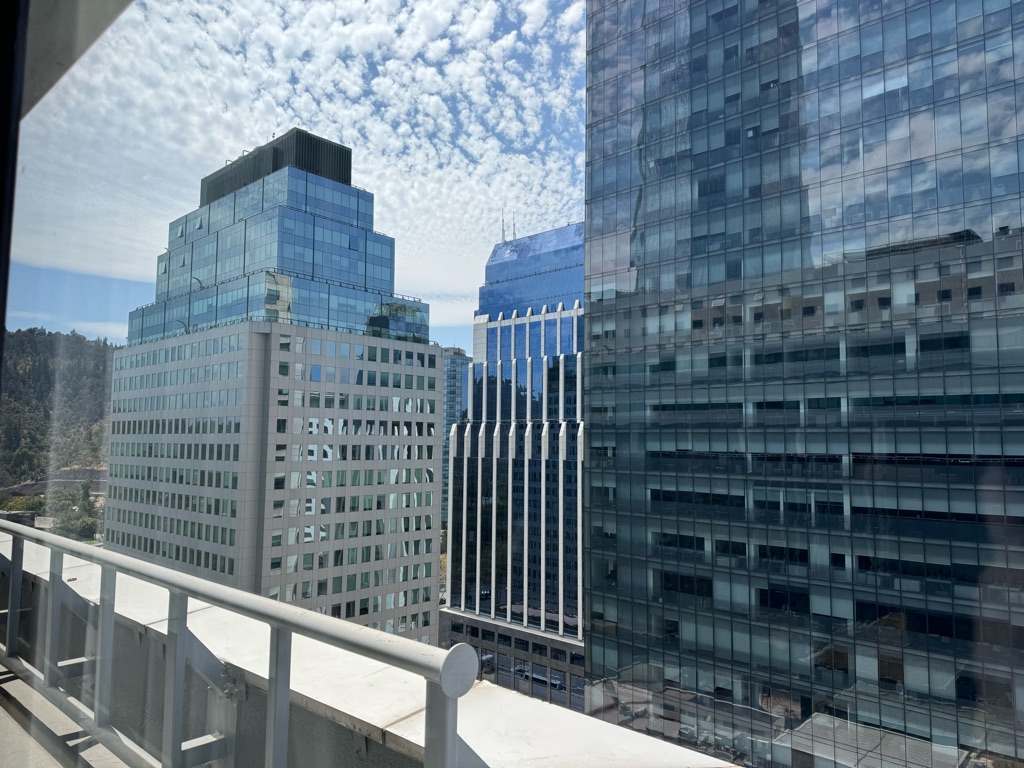
The uptown area is quite modern with office buildings and luxury accommodations. The tallest tower in South America was just next door, so we set off to explore.
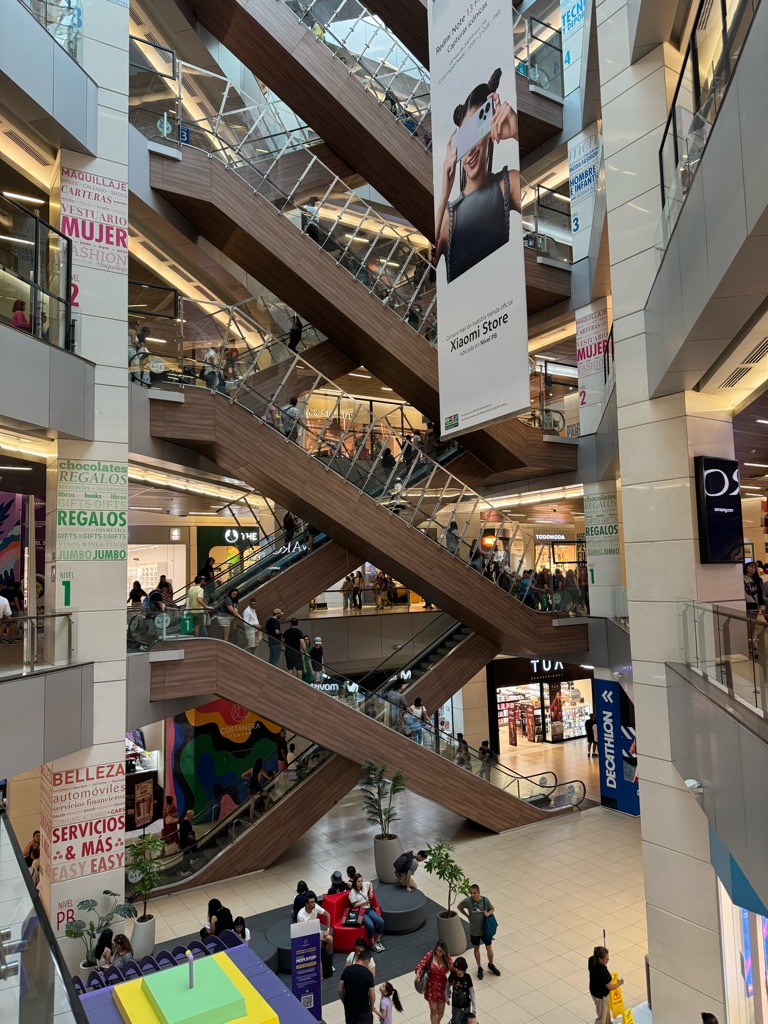
Escalator at Coastanera Center
First we had to traverse a huge, and \240very busy, five story indoor shopping mall. We’ve seen huge malls in Singapore and other places, but this one was undoubtedly the busiest!
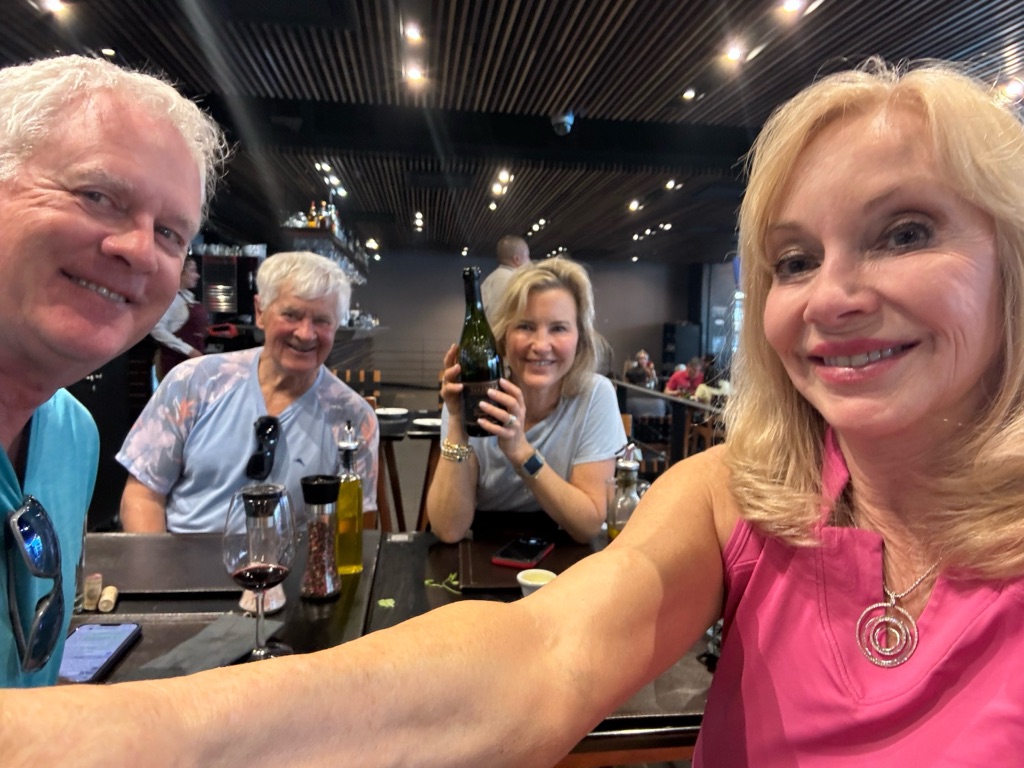
Late Lunch at Santa Brasa
We met our 30A friends who are traveling with us, Richard and Susie, to eat a late lunch at Santa Brasa beef restaurant in the mall and \240it was the best beef we’ve ever had! This wine was good too!
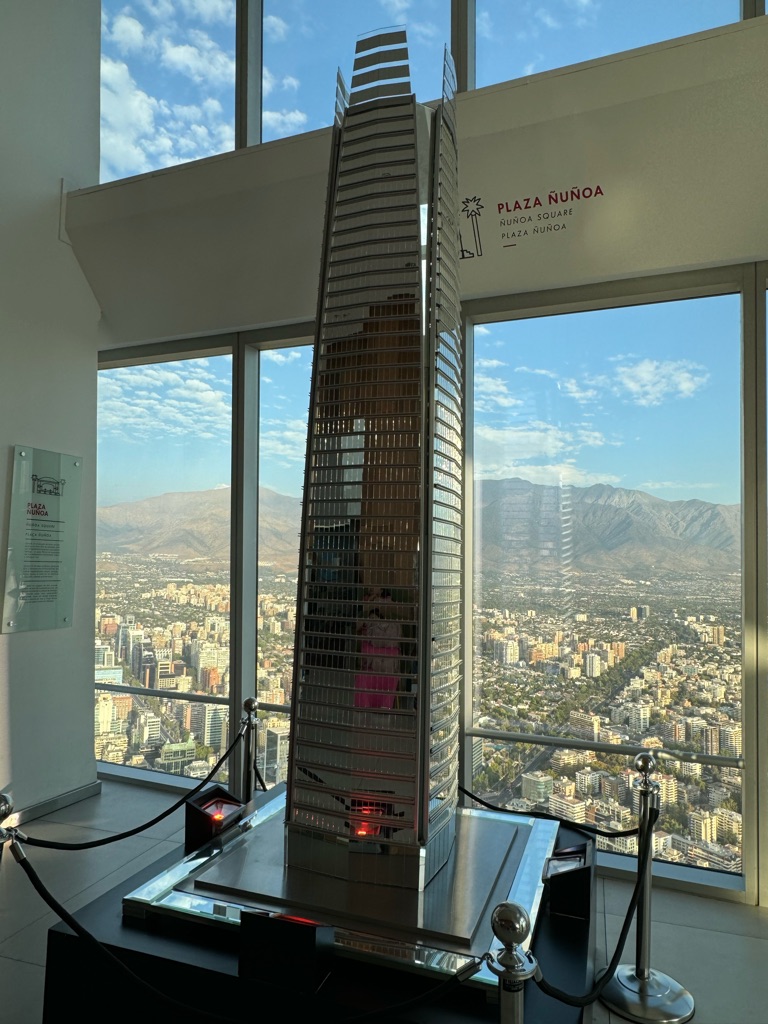
Model of Sky Costanera Tower
We entered the tower from the mall and \240rode 58 floors to the observation area - there were still 7 floors above with restaurant’s. This tower is slightly taller than the Empire State Building and we were too close to get a good pic from outside. But it is certainly the centerpiece of the city.
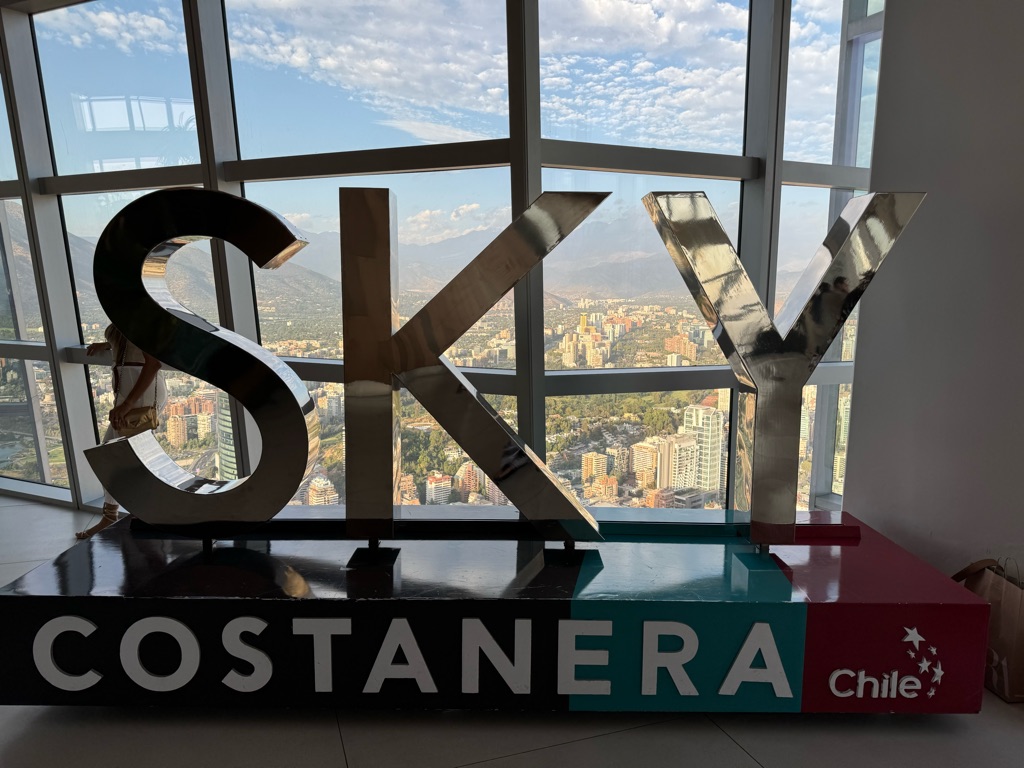
Photo Op Area
And so we took the opportunity!
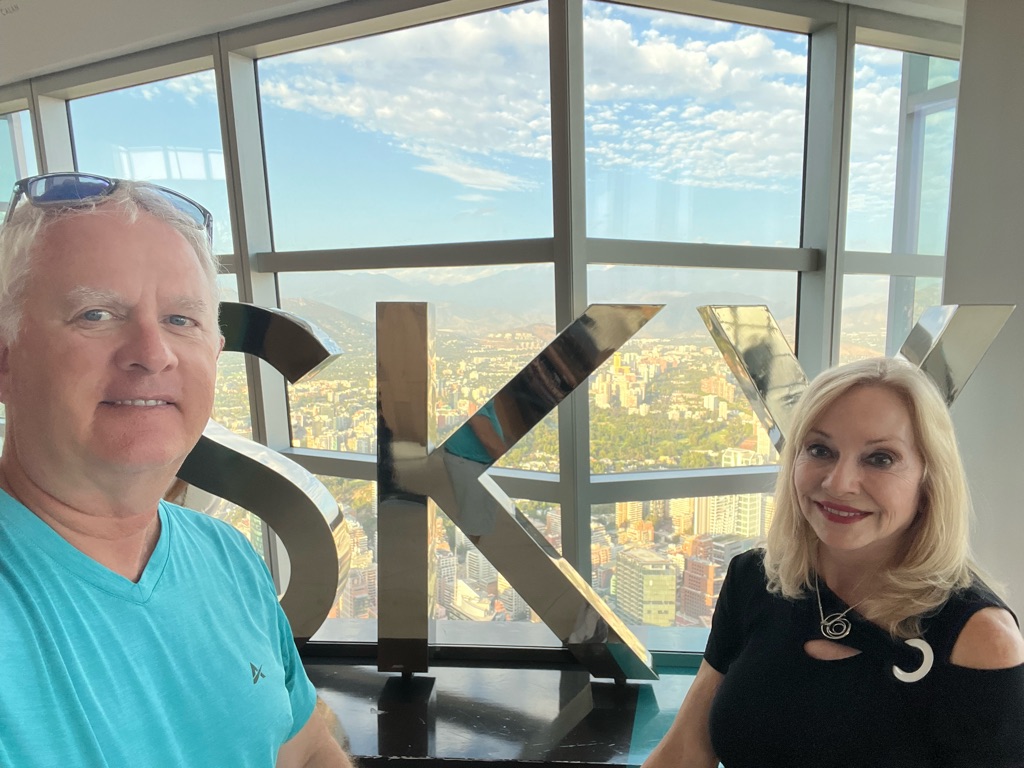
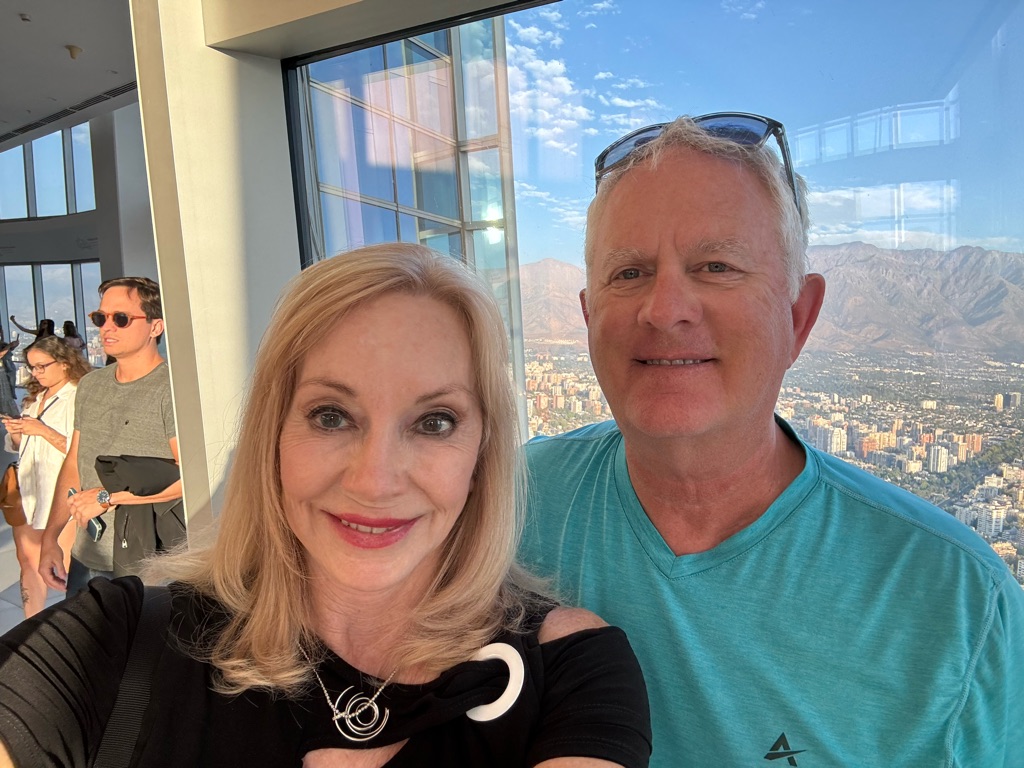
View of the Andes Mountains Behind Us

One of the views from the Sky Costanera Tower
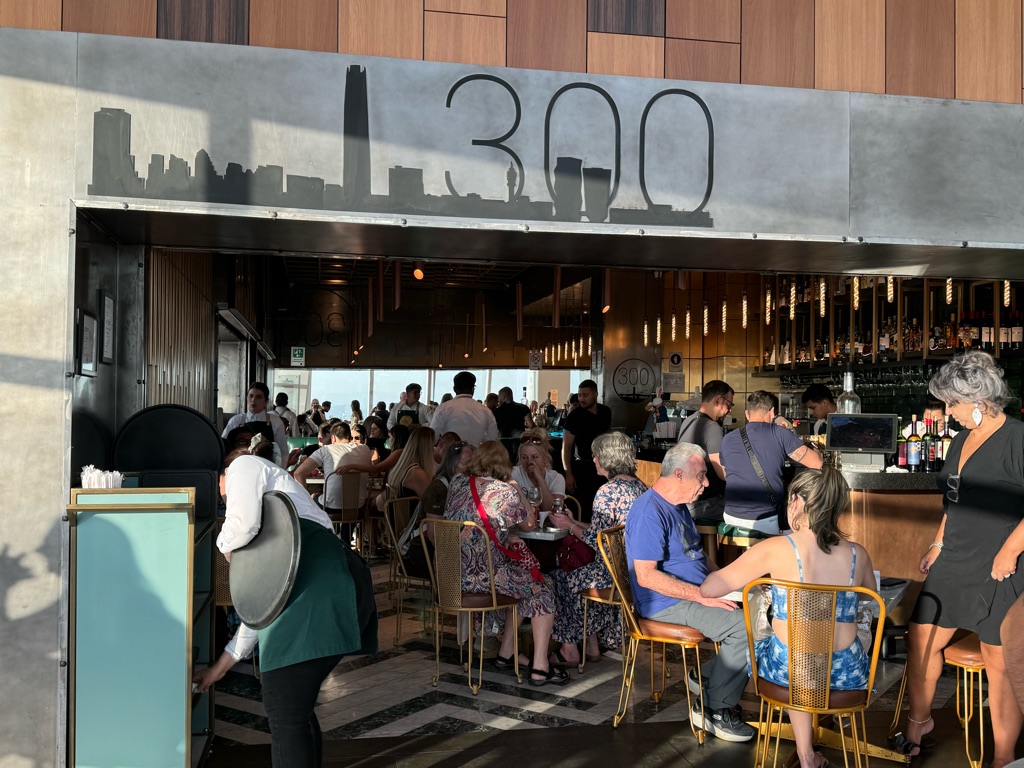
300 Skybar
We considered grabbing a cocktail and \240watching the sunset at the 300 meter tall Skybar, but they were quite busy.
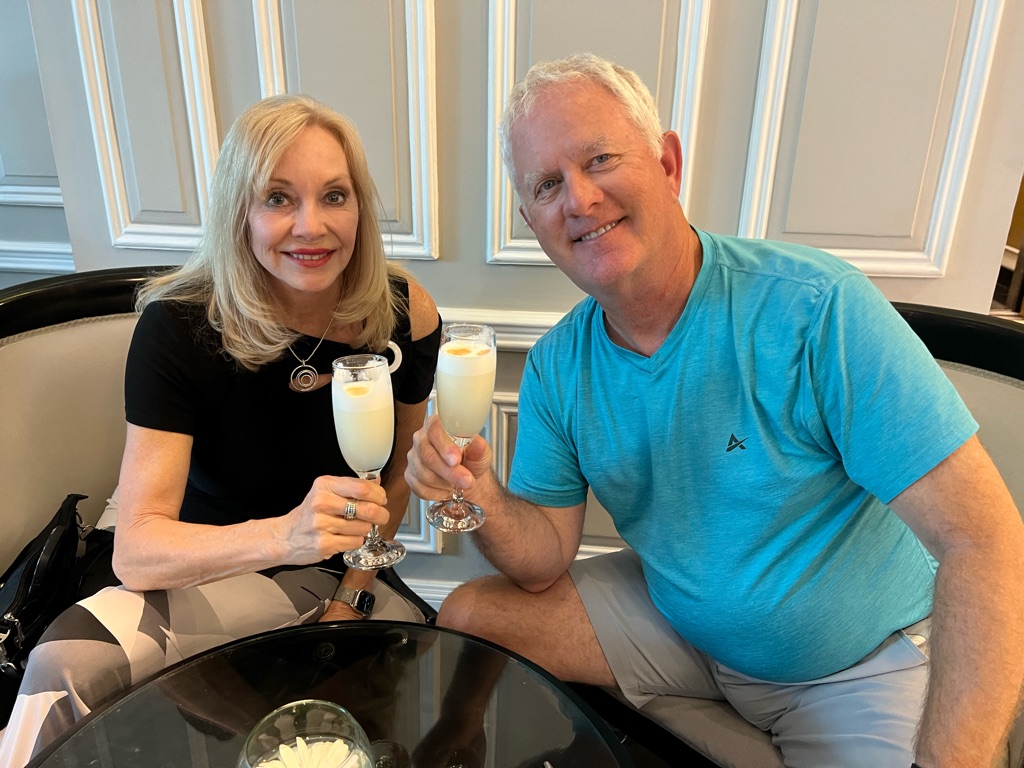
Pisco Sours
So we settled for Pisco Sours back at our hotel bar! Turns out that Chile ferments Pisco at almost the same rate as Peru. Supposedly they taste different, but we couldn’t detect it. It just tasted delicious!
We used our full free day to explore the city of Santiago with a guide, Patricia. The weather was gorgeous and \240our guide was incredibly knowledgeable of the city, having lived her whole life there.
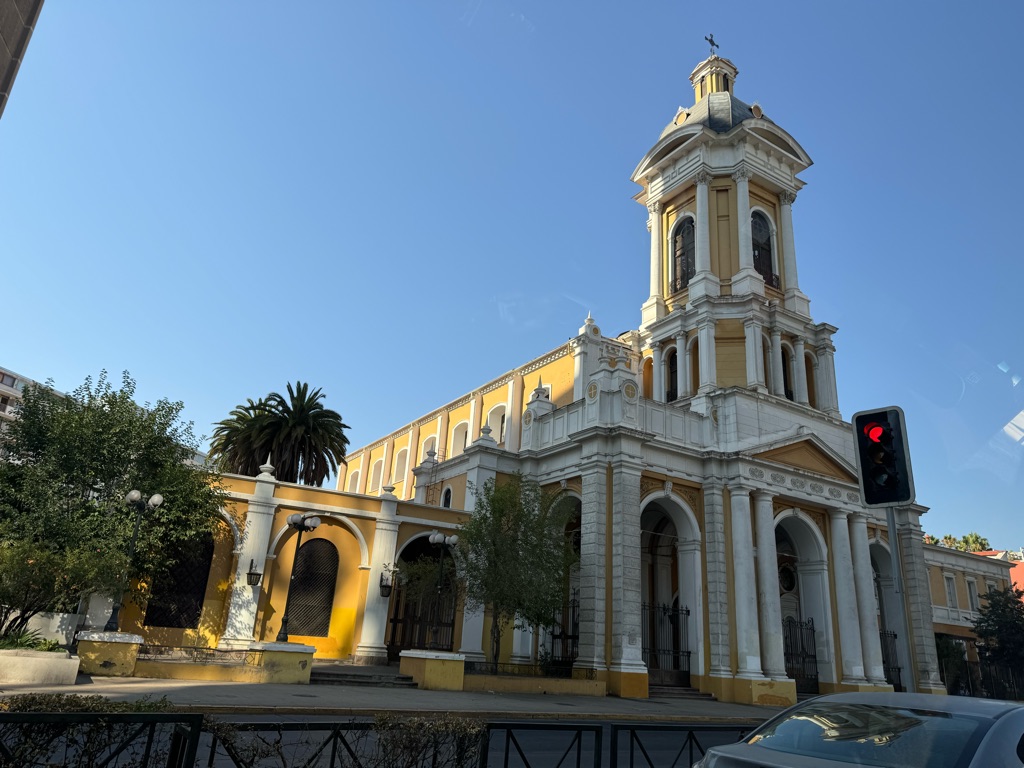
Church of the Divine Providence
Chile was conquered by Spain and like most of Central and South America, the primary religion is Catholicism. \240This church was famed for having lost the cap of its tower during and \240earthquake in 2010. K

Church of San Francisco
The Church of San Francisco is the oldest church is the country. Consecrated in 1620, it has survived 7 earthquakes, although some of the arches today show signs of the struggle to stay aloft.
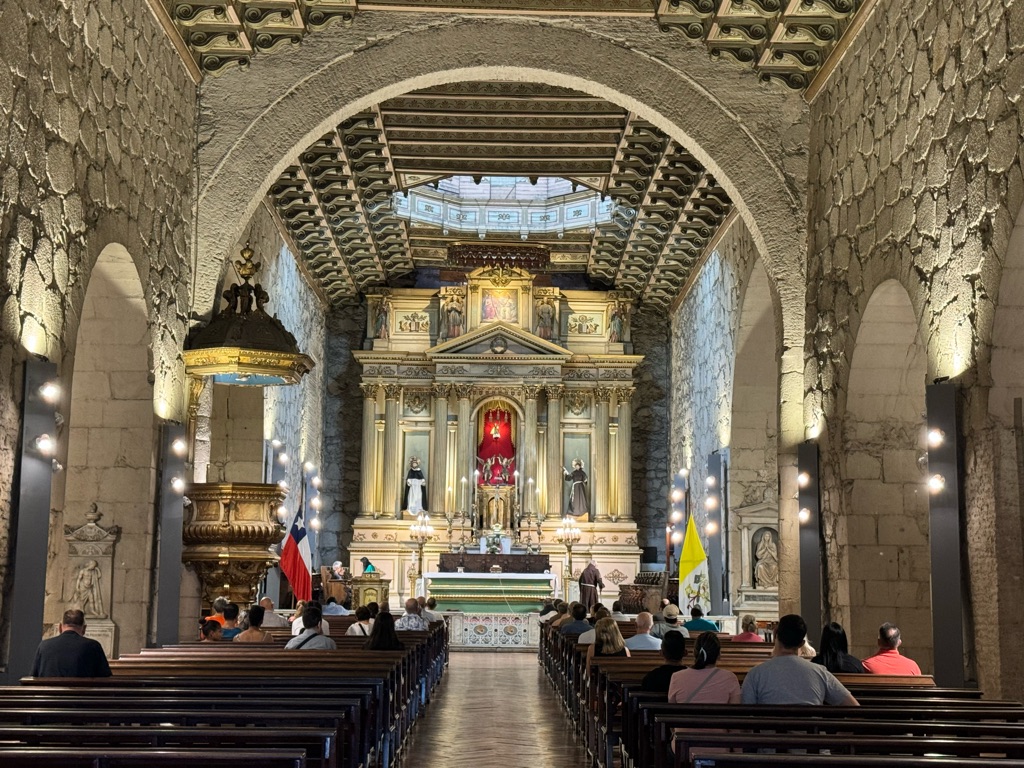
But the inside was intriguing and \240beautiful!

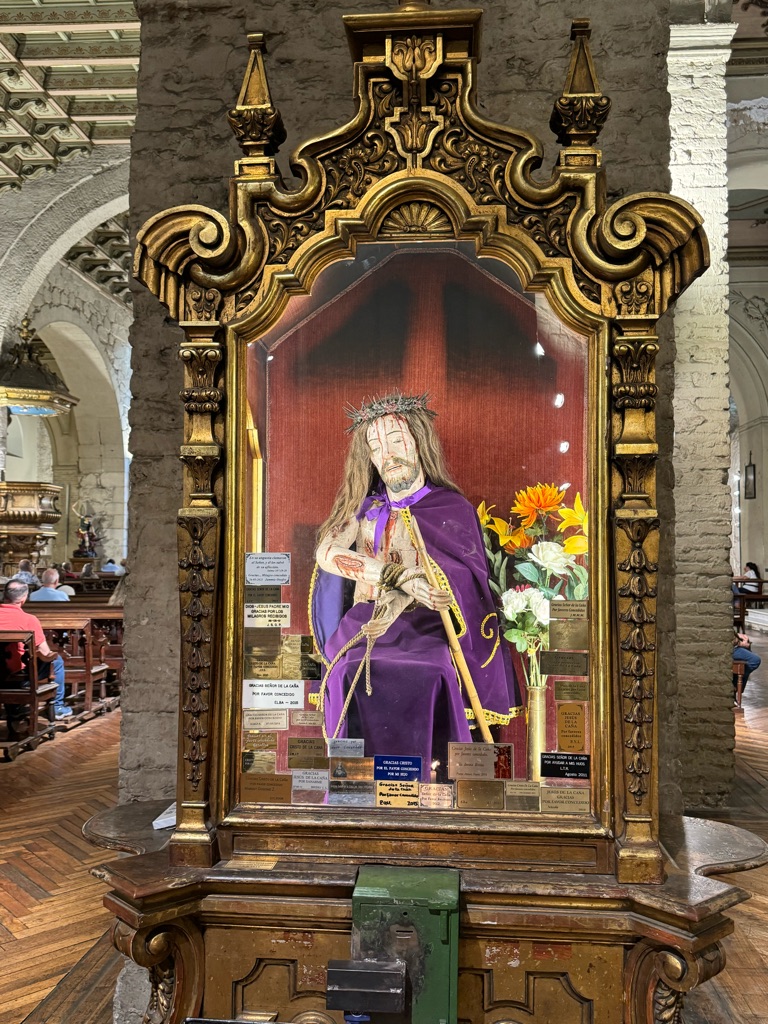

Emerging from Sanctuary
We wandered through this venerable church just before the bells rang for Mass and then left to travel to the horse races!
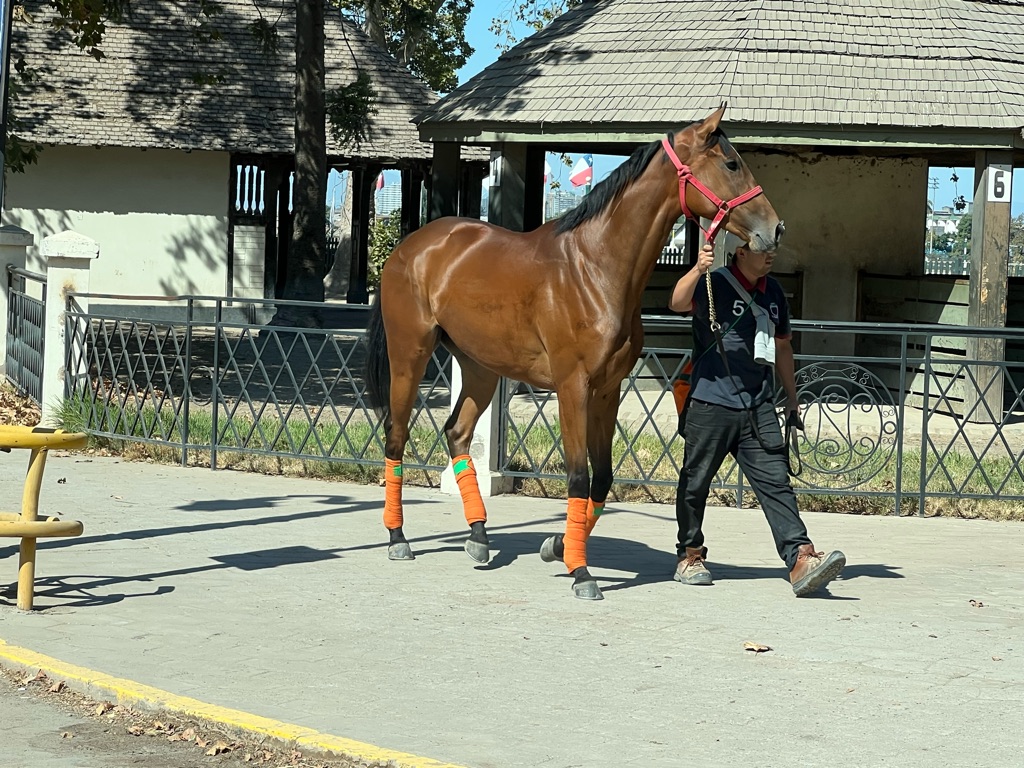
The Next Competitor
While Chile has a national breed of Criollohorse, the Chilean Corralero or Chilean Criollo (Spanish: Caballo de Pura Raza Chilena) which is a descendant from horses brought to the Americas from Spain by the Conquistadors, they race thoroughbreds at the track. The Corralero, which has shorter legs, is used for ranching.

Club Hipico de Santiago
Founded in 1869, this sprawling horse track also offers dining options & hosts concerts. There are two grandstands, one for the wealthy and \240important people and one for the regular people. As Chile's oldest racetrack and home to South America's oldest stakes race, the Clásico El Ensayo, races are big entertainment!
Chilean Museum of Pre-Columbian Art

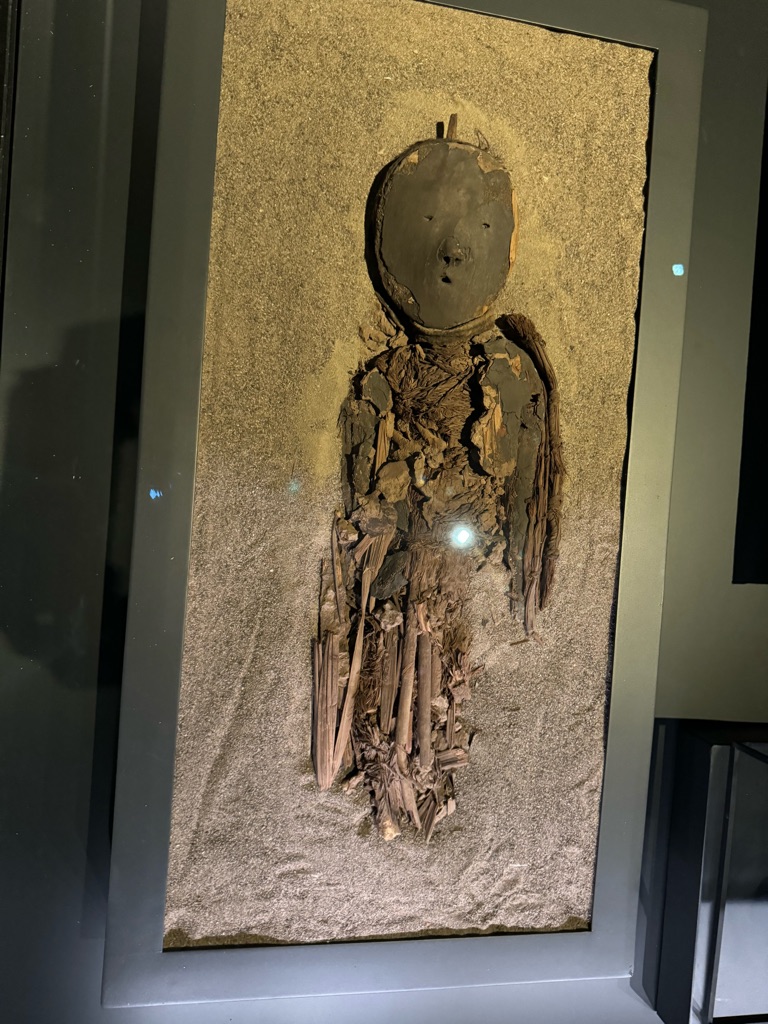
Mummified Baby
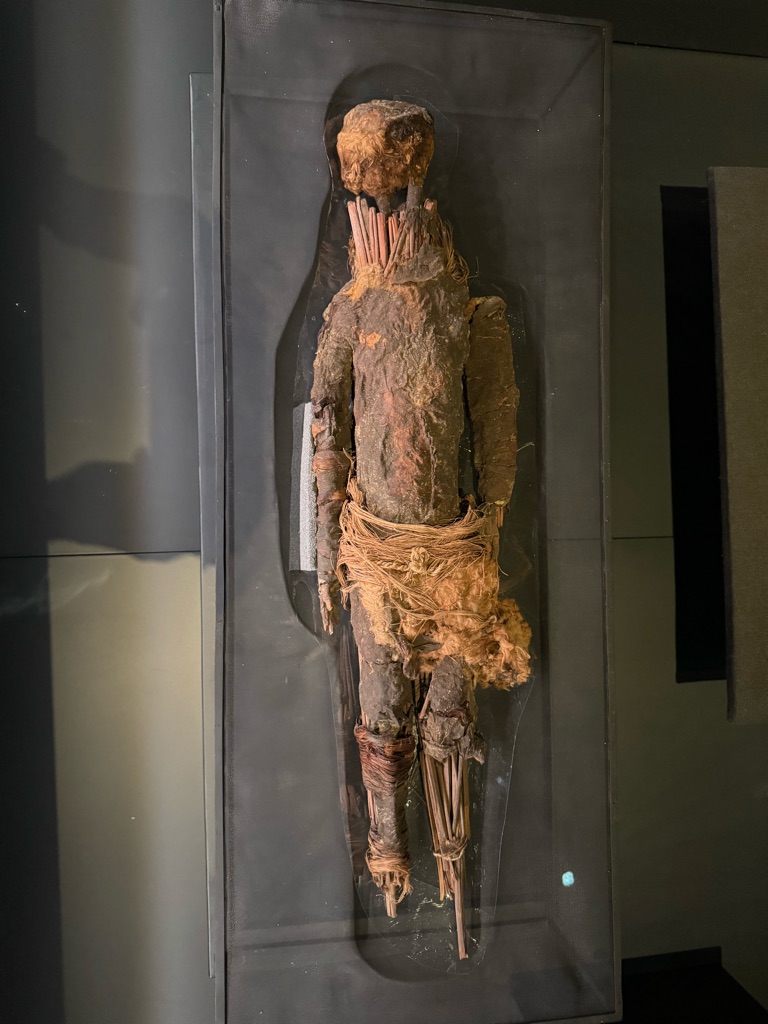
Mummified Fetus

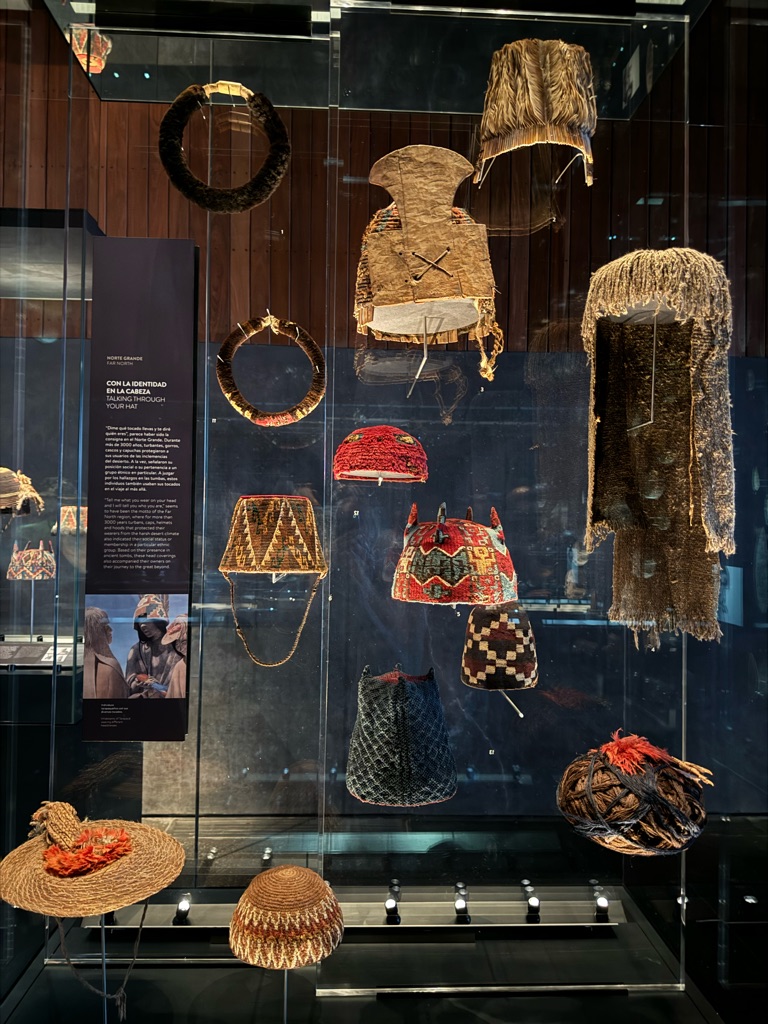
Headgear

Carved Stones
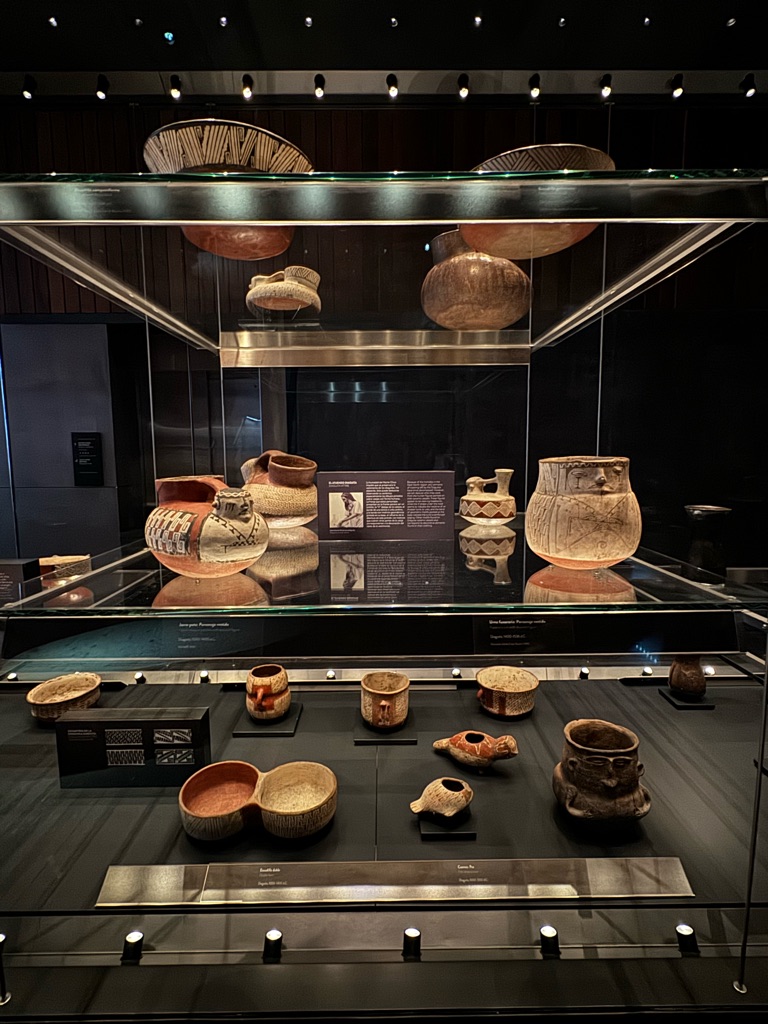
Etched Pottery

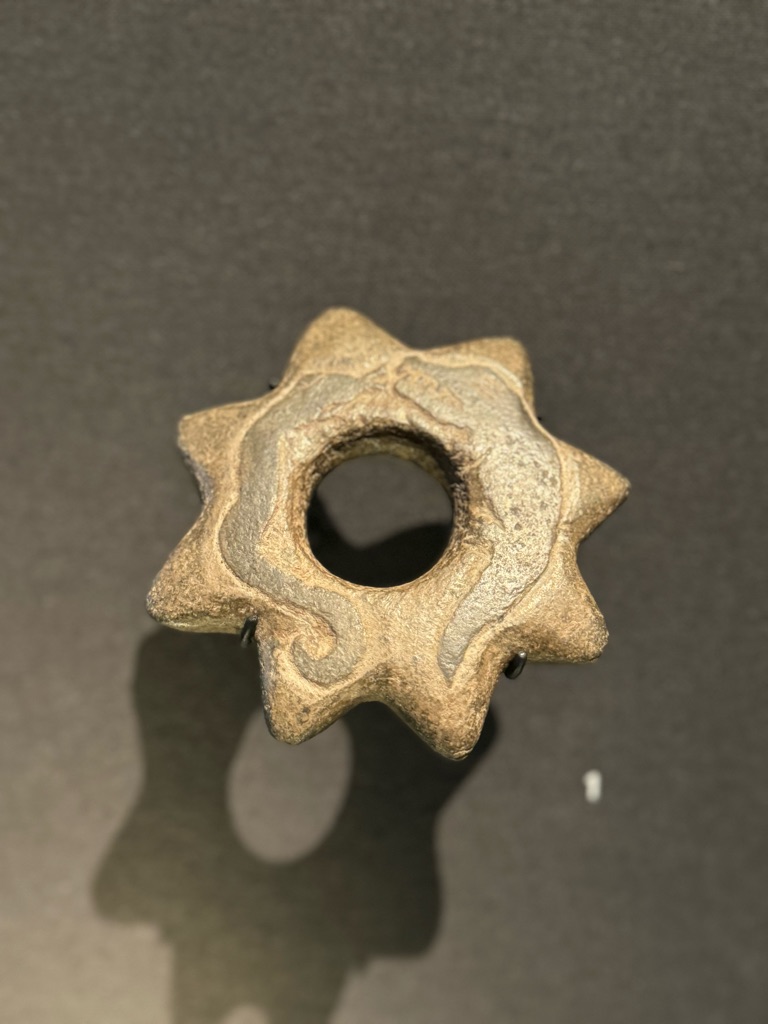
Beginning of Life
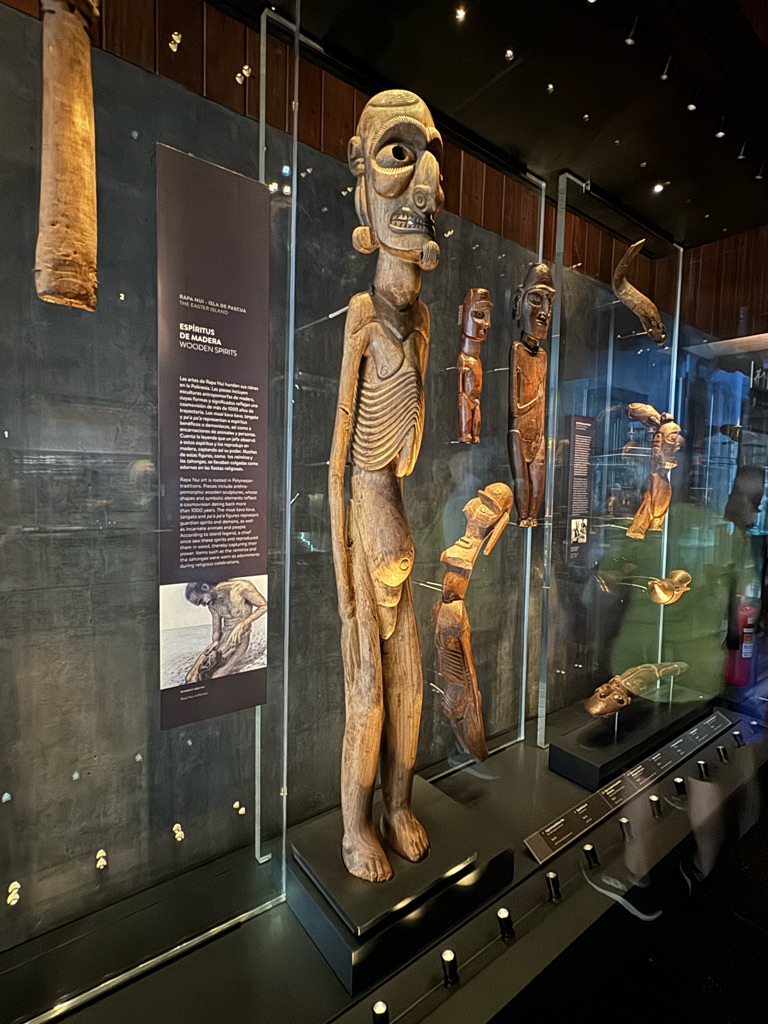
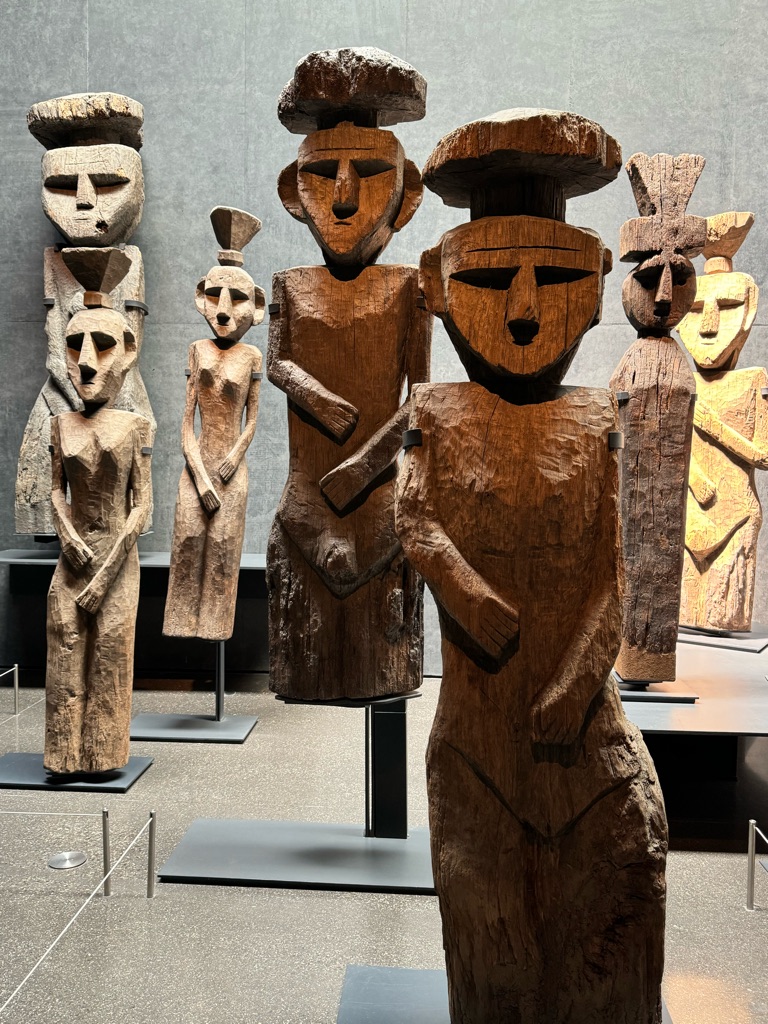
Moa
Wine tasting at Cousino Macul Winery

Dating back more than 500 years to a territory that in colonial times was designated by order of the King of Spain for the production of country and muscatel strains, in order to supply wine to the Eucharist and part of Chilean society. The person in charge of fulfilling this mission was Juan Jufré, Spanish conquistador and former owner of the land where the Macul property is located today. Three hundred years later, in 1856, Matías Cousiño acquired the 1,000 hectares of Hacienda Macul.
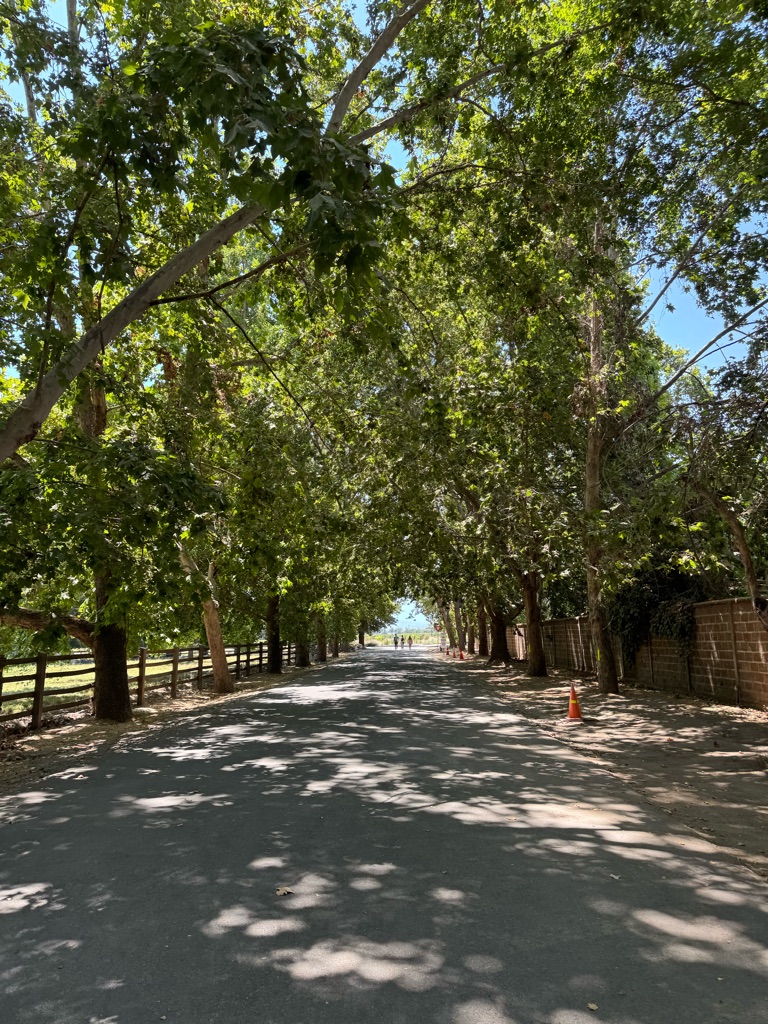
The Avenue to the Macul Haciendo
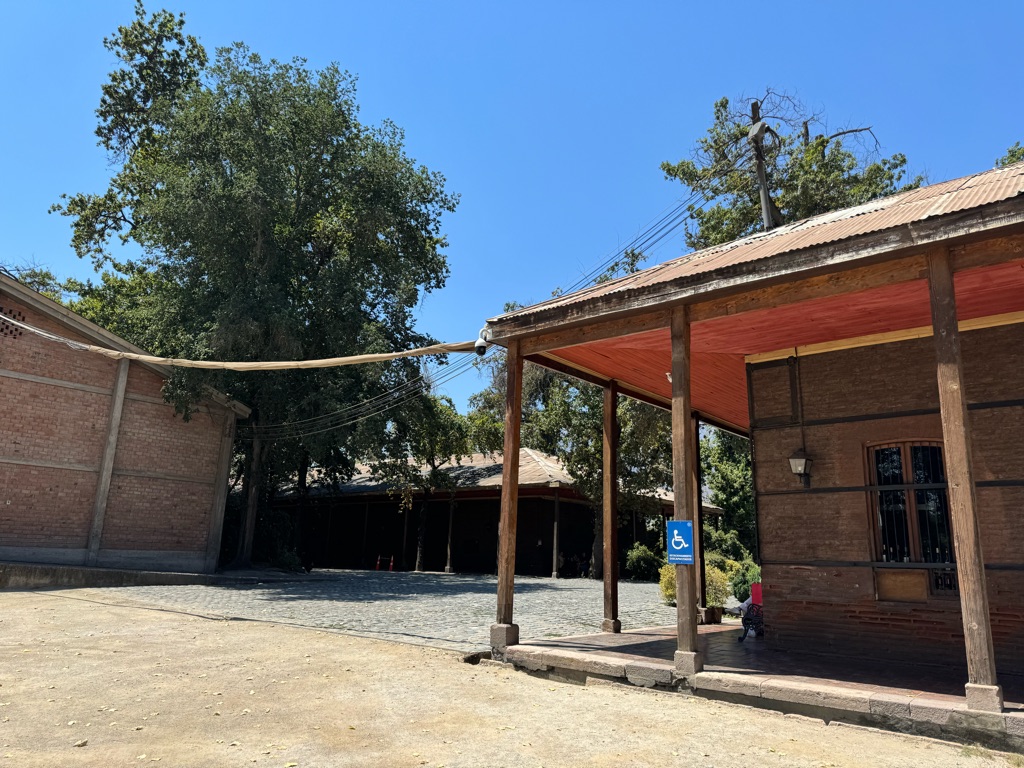
The Yard
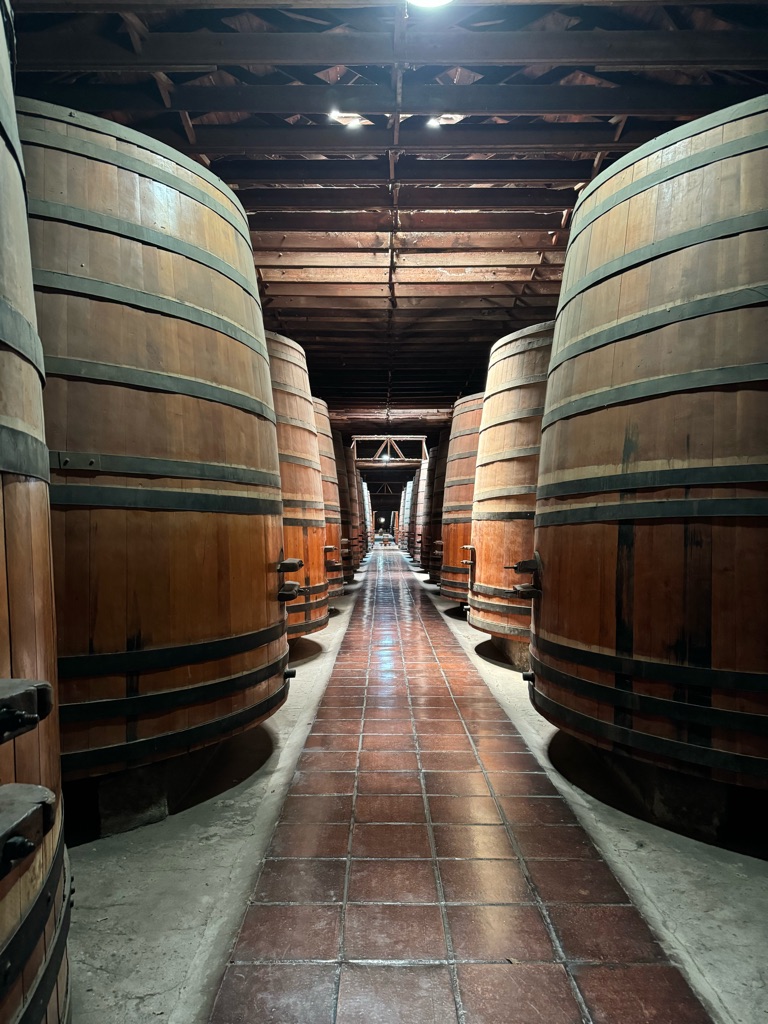
The Old Fermenting Barrels
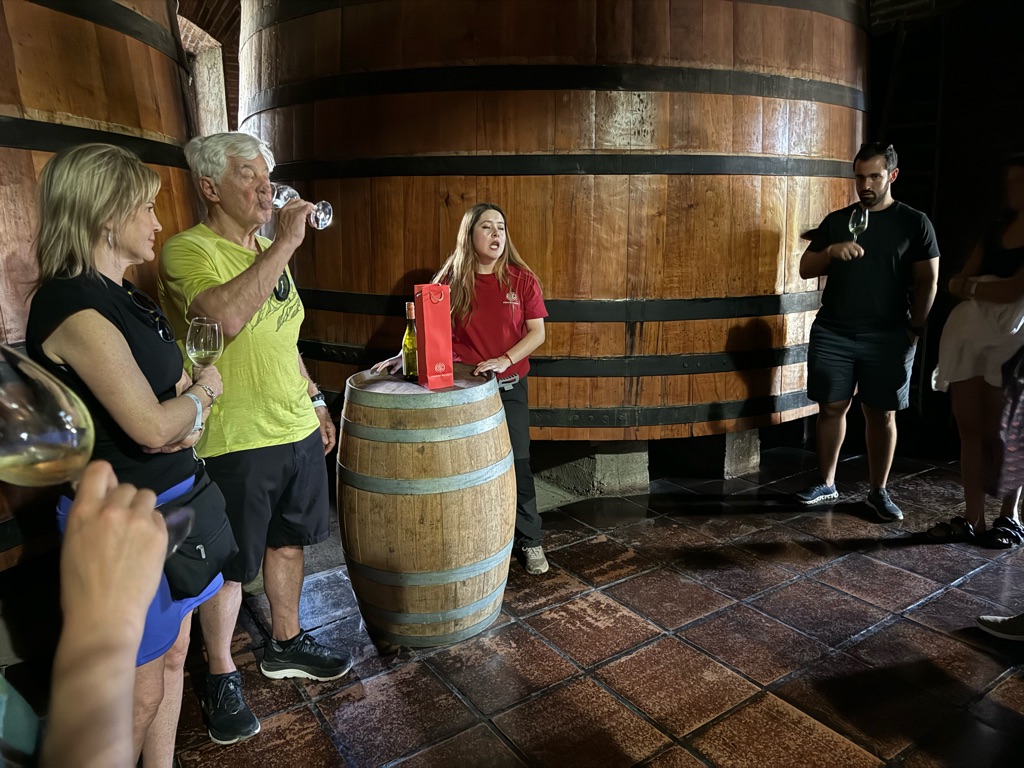
Richie & Susie Sampling the Chardonnay
The great vines were imported from France and \240used to build the empire they have today. Cabernet Sauvignon and Merlot were imported from the Pauillac region, Sauvignon Verde and Gris from the Martillac region and Riesling from Alsace, the latter an exclusive white grape variety personally selected by Doña Isidora.

Celebrating Great Wine Making

The Vault
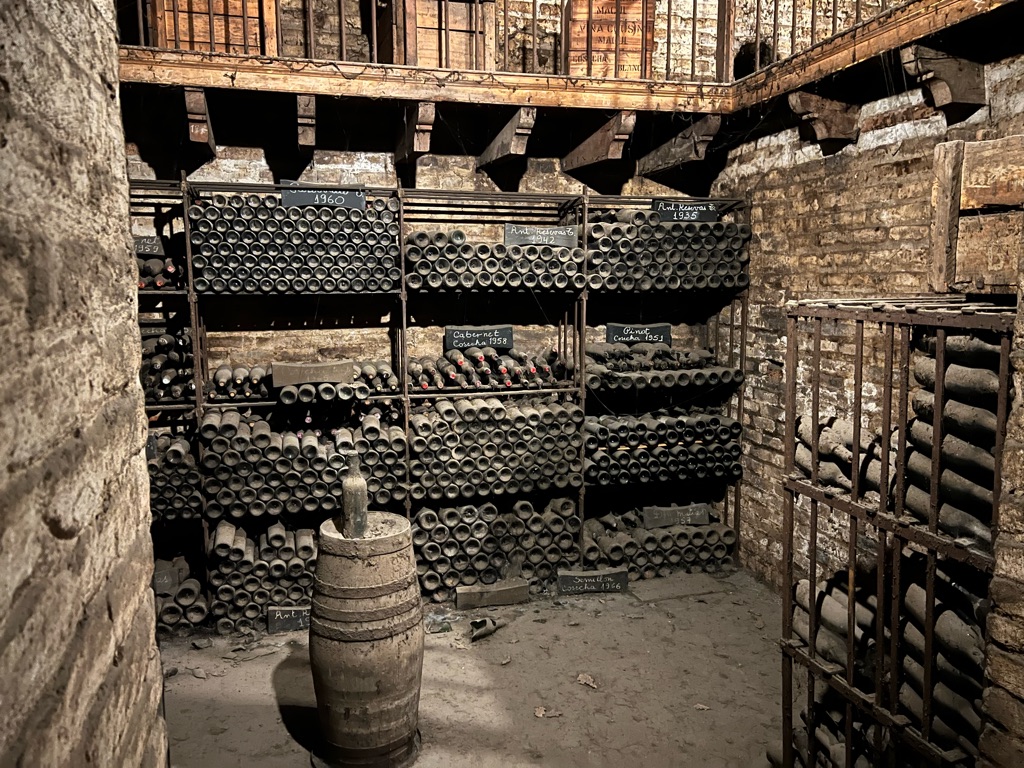
The Library
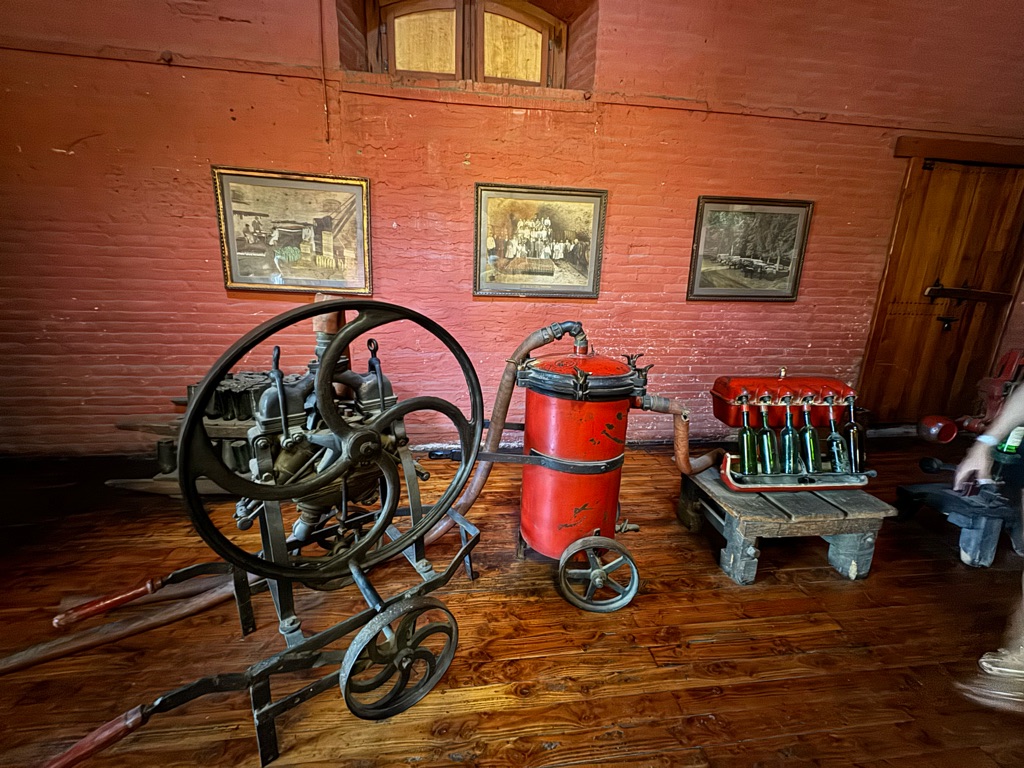
Hand-Bottling Process
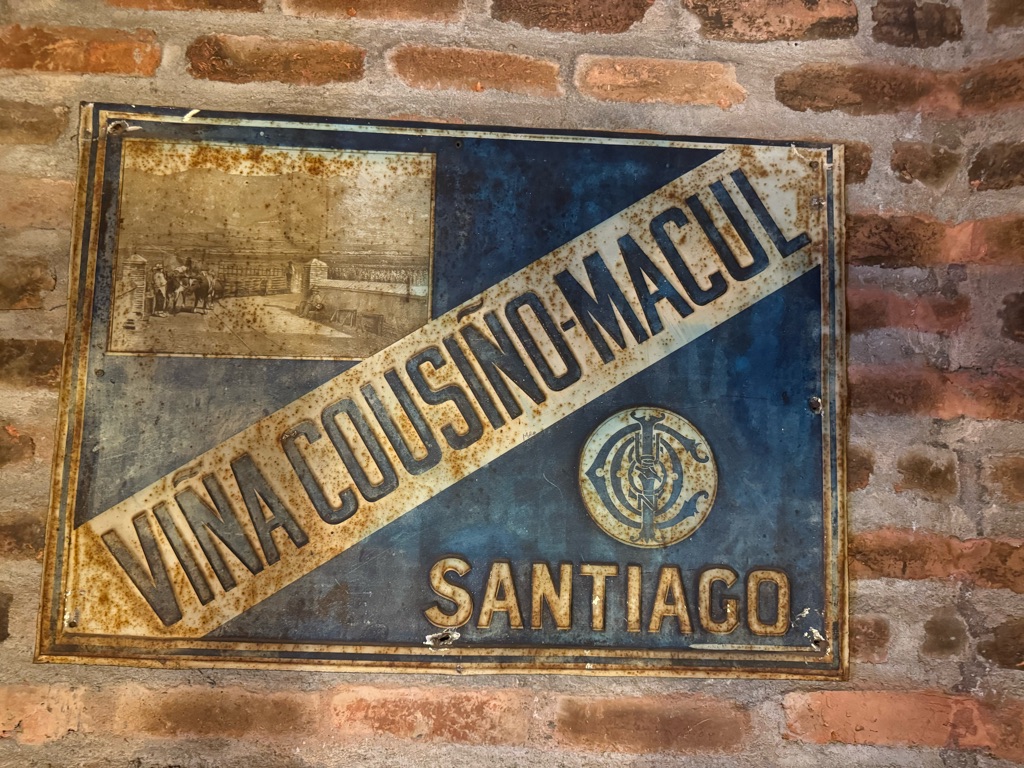
Flying down to Puerto Williams to start our Antarctic adventure.

Boarding our 65 person charter jet!
The flight was supposed to take 3 \240hours to get from Santiago to Puerto Williams, but we had to stop for fuel in Puerto Arenas because the head winds caused us to use more fuel, so it took a bit longer.

Packed snow feeding a high mountain lake
But the scenery out the plane window was fantastic!

Andes Volcano

Another Volcano
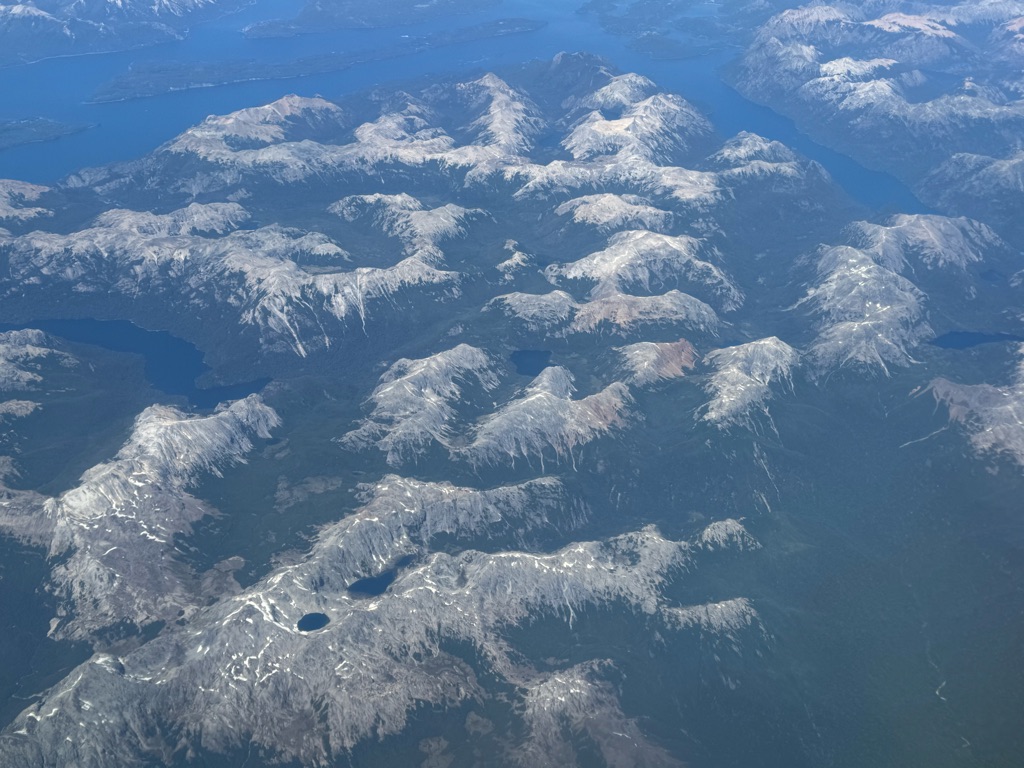
Bare Mountains Above the Tree Line

The 30A Crew on the Plane
Our 65 person plane was full but we were served lunch and cocktail’s and managed to have a fun time. Overall there were 4 separate planes of this size bringing all the passengers for our ship from Santiago to Puerto Williams.
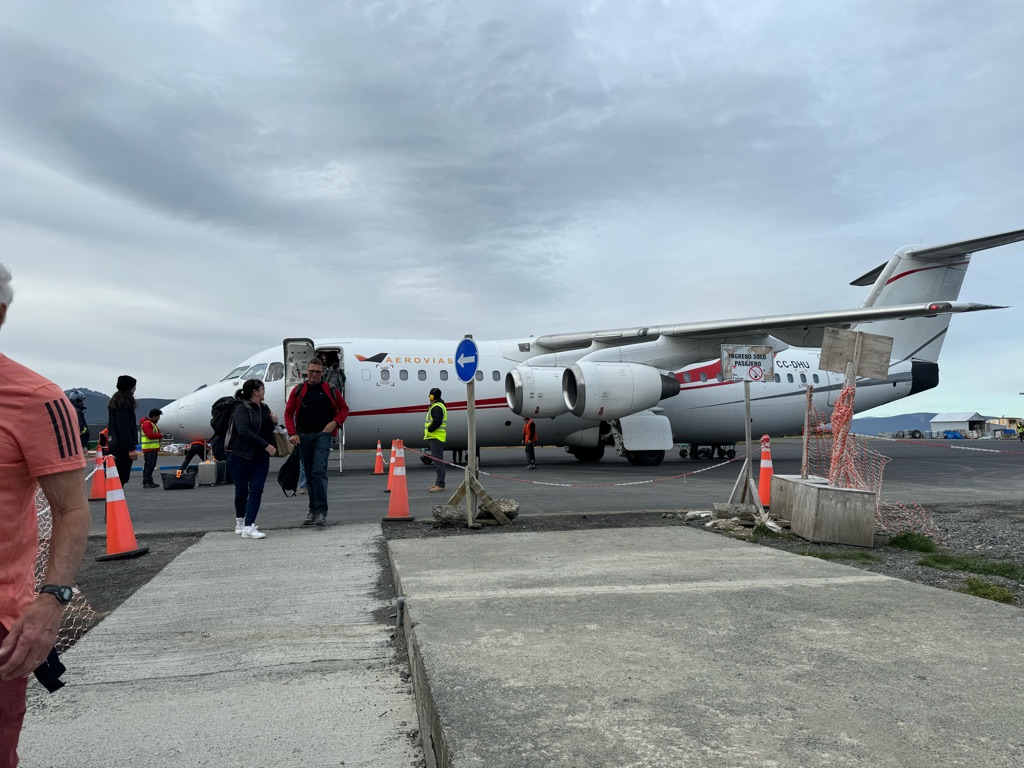
Deplaning in Puerto Williams, Chile
We landed on a tiny runway and \240deplaned down a concrete ramp and \240into a tiny bus that took us around the bay to our ship.

Approaching Silverseas Silverwind
The weather was cool and \240windy!

Sunset on Silverwind!
A Day at the End of the World
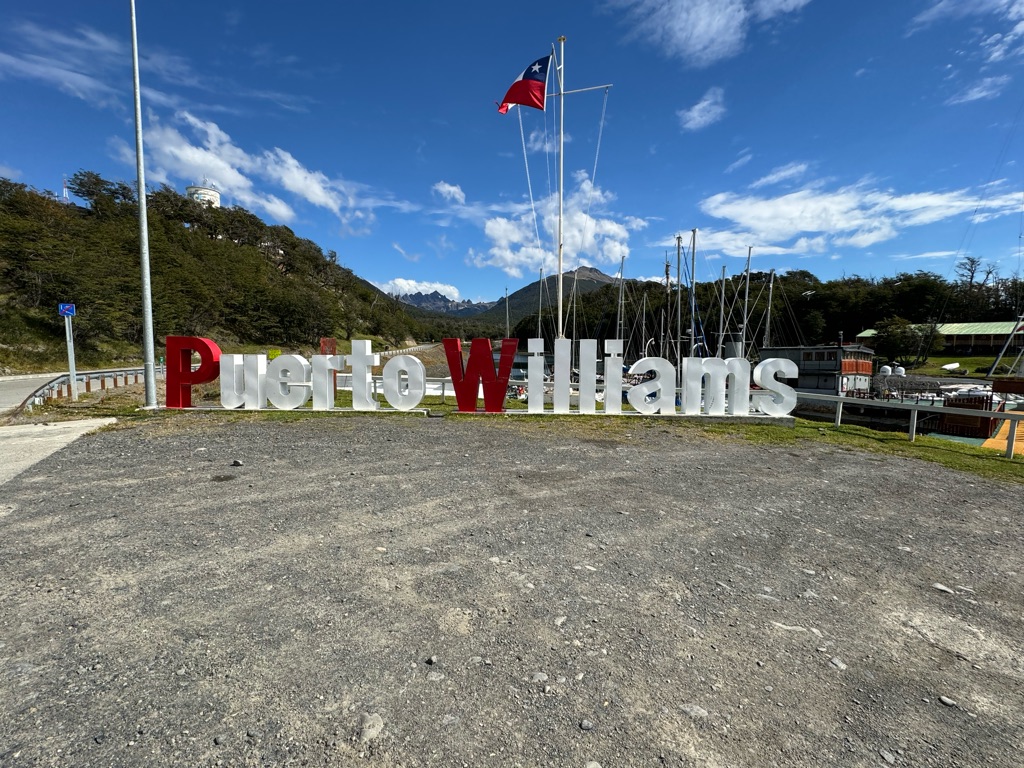
Puerto Williams
Puerto Williams, located at a latitude of almost 55° S, is the southernmost city in Chile and, along with the Argentine city Ushuaia,receives the title of " southernest city in the world. The territory where Puerto Williams is located has been inhabited for more than 6,000 years by indigenous peoples called Yagans, although only about 150 of them still live there. The Yagans were a nomadic people who fished the waters on the many islands in the Tierra Del Fuego area. Despite the cold temperatures, they \240 were naked all year. They traveled in family units and used fires to warm themselves and \240to communicate with other families. When Europeans arrived and \240saw the many fires on the shore around the area, they named it Land of Fire, out Tierra Del Fuego. About 2000 people live here, making it large enough to gain the status of ‘city’.
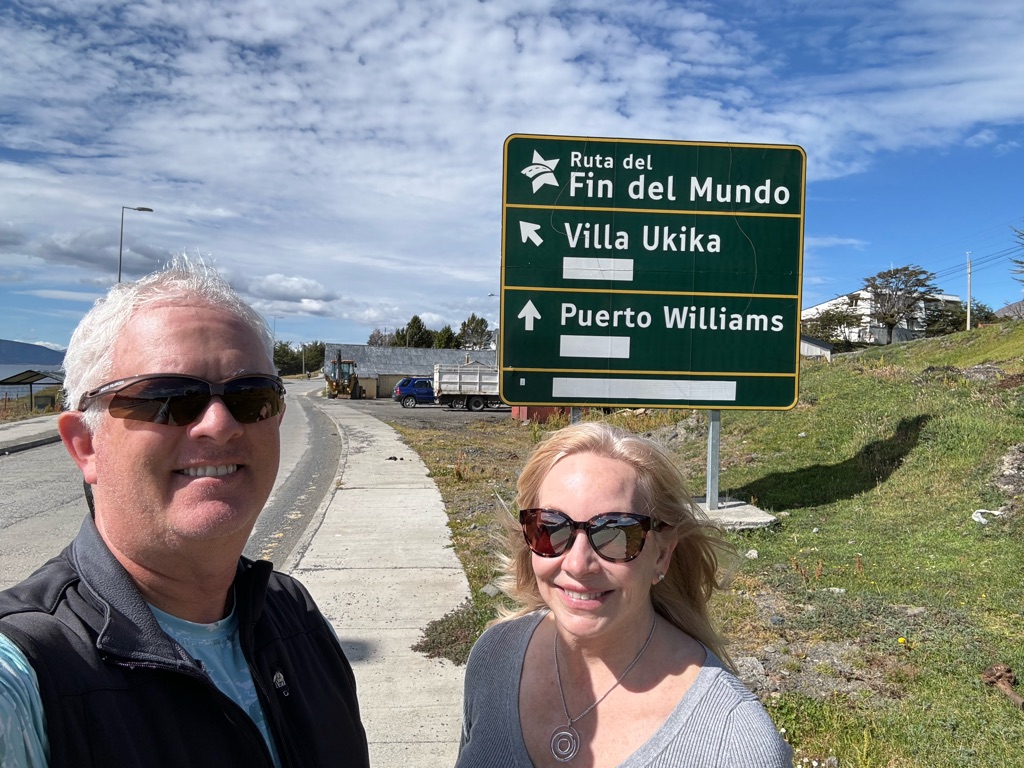
Fin del Mundo
While both Ushuwaia and Puerto Williams call themselves ‘the end of the world’ Puerto Williams is about 13 miles further south. So it is the ‘real’ fin del mundo!

Sailboats at Rest
There were sailboats docked in small clusters all along the tributaries that fed into the Beagle Channel where our ship was docked. They made for a picturesque views!
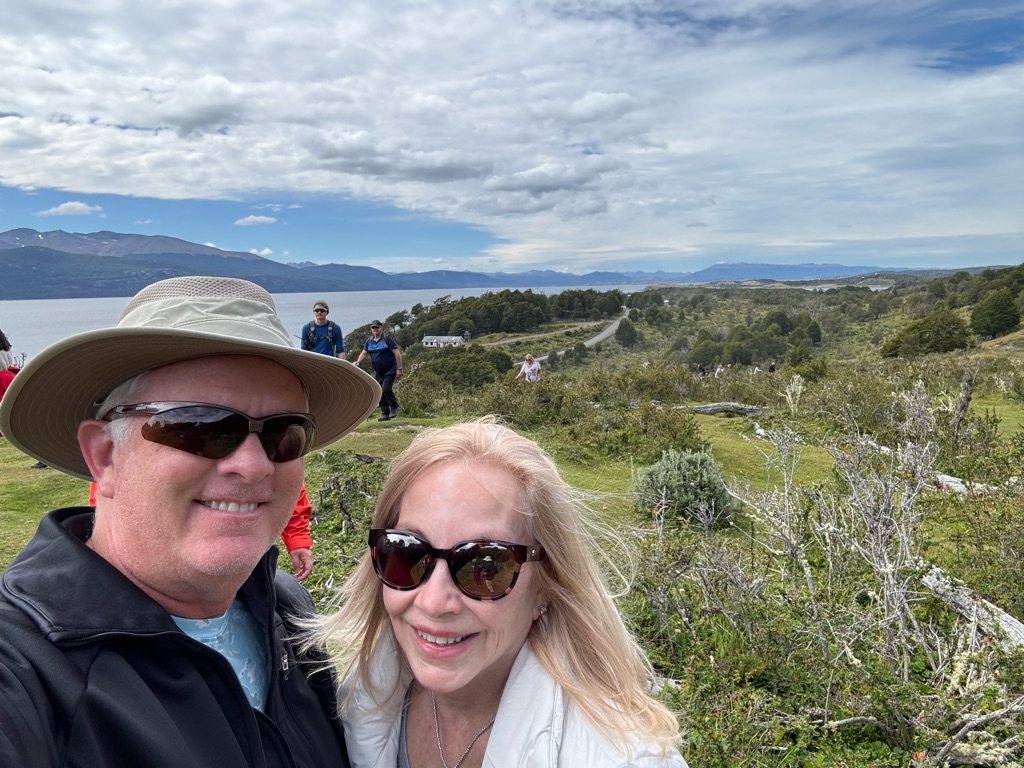
King of the Hill
Turns out we had a full day to spend in Puerto Williams as the weather in the Drake Passage was too stormy to attempt a crossing. So, we chose to go on a 1.5 mile hike to see a waterfall. What they left out of the descriptions was the elevation change that we had to summit. It was a short, but strenuous climb!

Hiking to the Waterfall
Once we got to the top of the hill, we entered the Forest and crossed a creek several times, often on rickety boards or rotten tree trunks as we approached the waterfall.

The Waterfall
Once we reached the end of the trail, the 30 foot waterfall was a rewarding photo op!
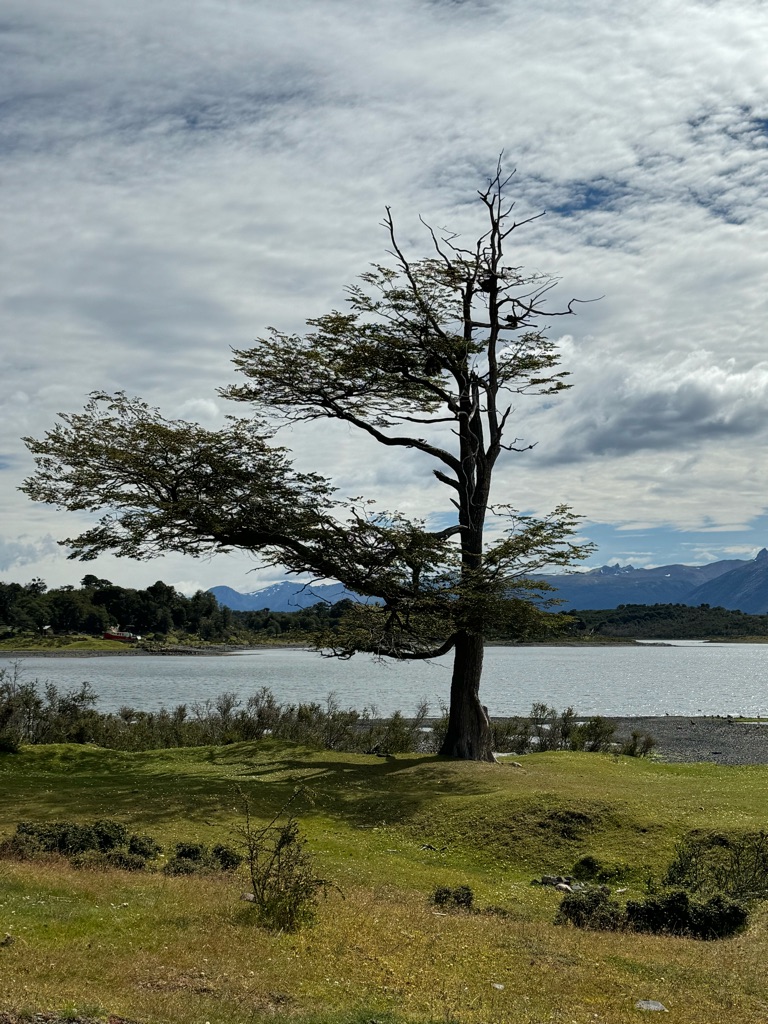
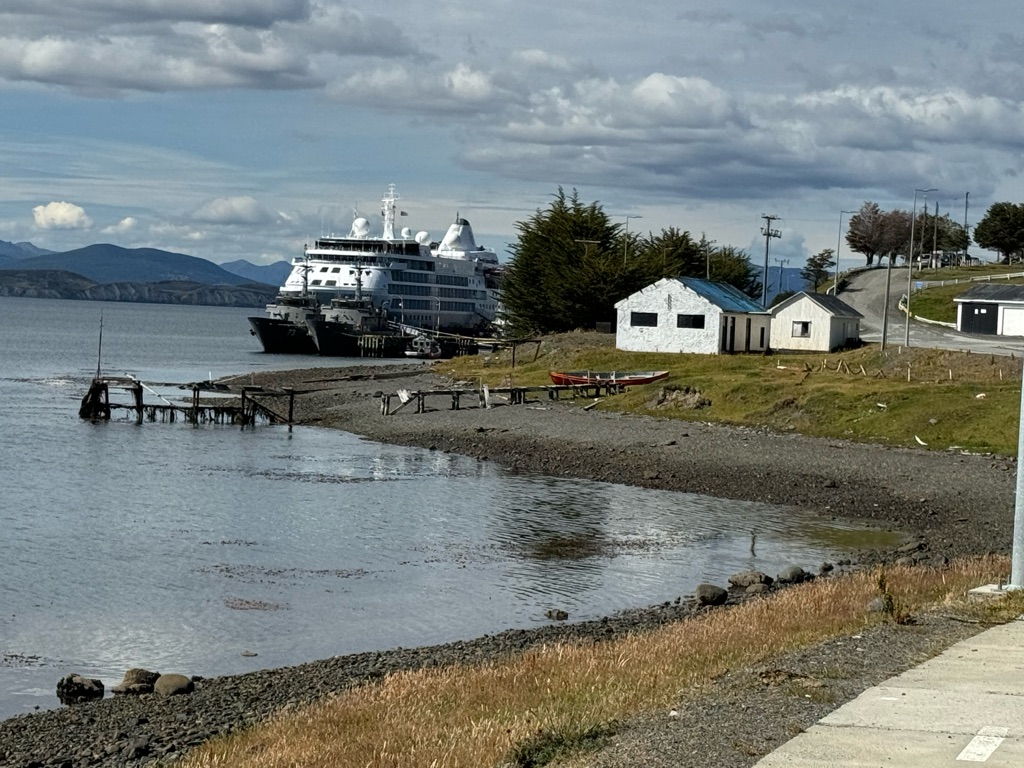
Walking Back to tge Ship
We took a short 1/4 mile walk back to our ship, being careful not to step in cow and \240horse manure. Apparently, cows \240and \240horses roam freely around town, often sharing the sidewalk as they move to a new grazing area.

Silverseas Silverwind
Our two days spent crossing the Drake Passage were filled with learning about the bird’s and \240sea mammals in the Antarctic area.

Seabird Lecture
Entertainment on an expedition ship is slim. Primarily you’ll have a guitar player or piano player to serenade you during happy hour and’s after dinner. But most of the entertainment is educational with lectures on the geology, \240geography, and \240history of Antarctica as well as the flora and \240fauna in the area.

First Sited Iceburg
On the second day when we were about 3 hours from entering the calm waters around Antarctica, we encounter our first iceberg. \240From this angle it resembles a military boat.
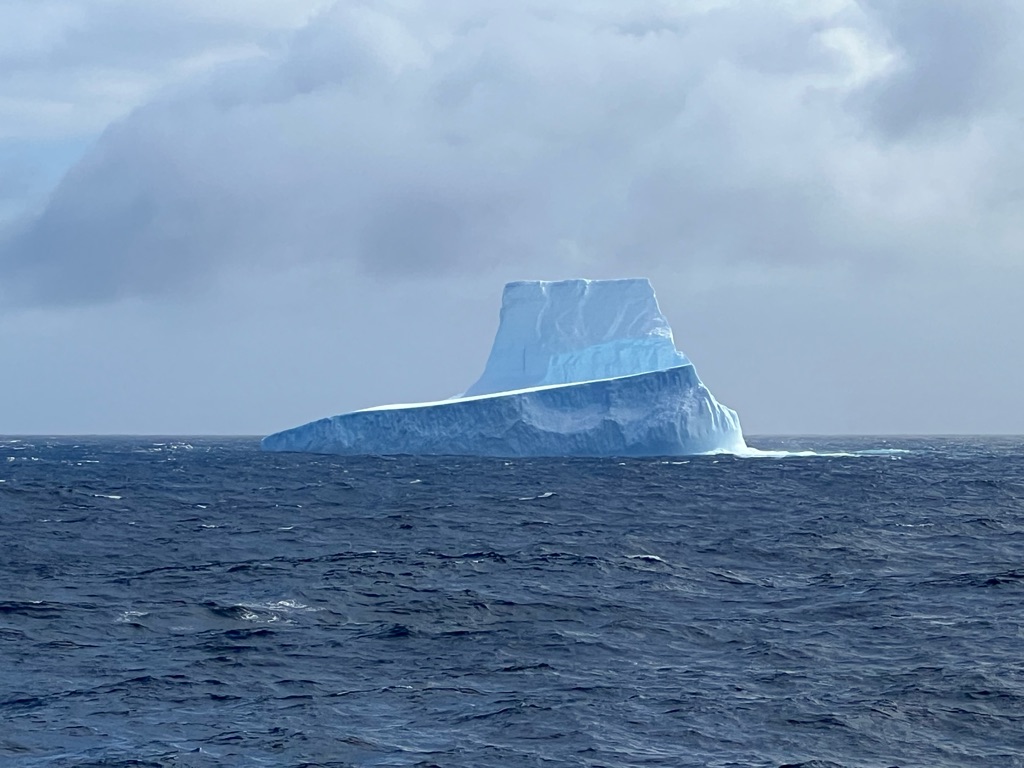
Another Angke of the Iceberg
But from this angle it resembles a power plant with 3 smoke stacks. Or perhaps you see something else?
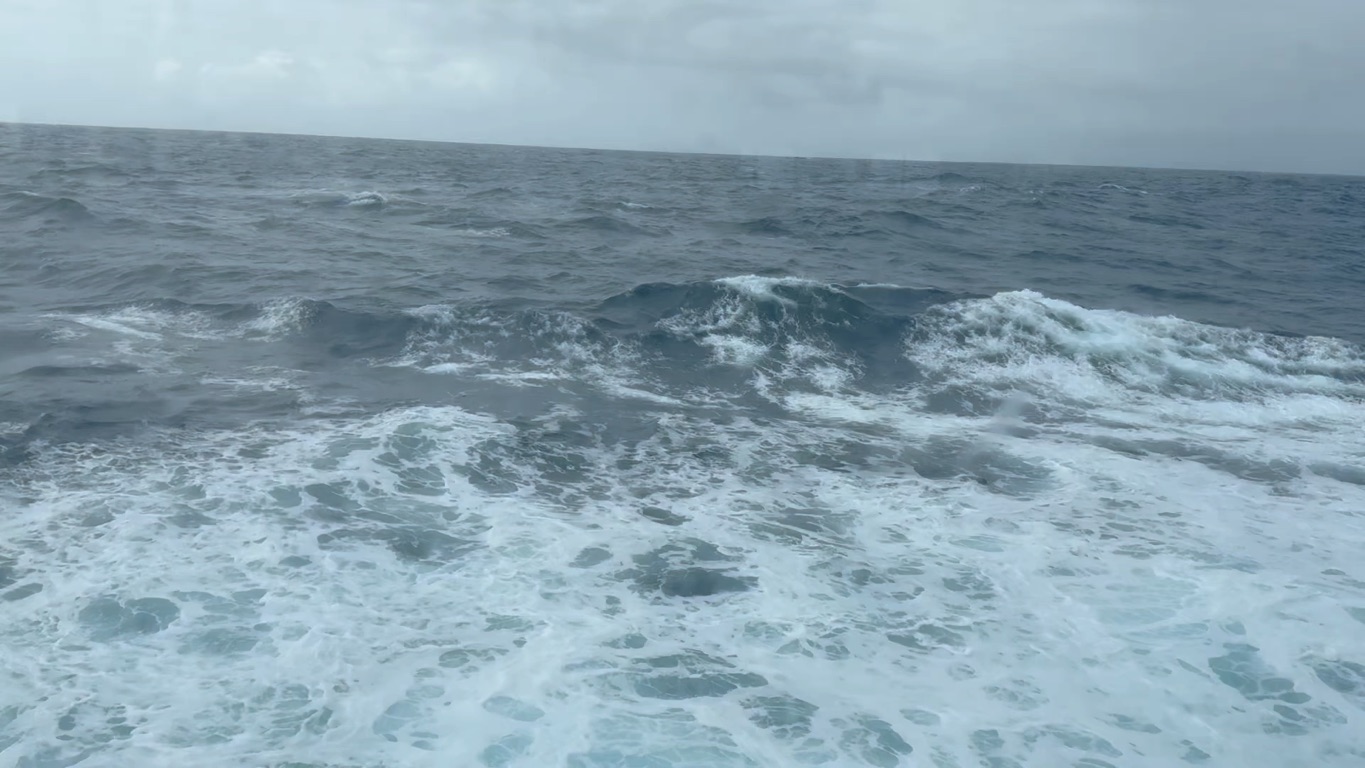
Rocking and Rolling Through the Drake Passage
The video doesn’t show the real magnitude of the swells. But as you can see, there were a lot of 10-15 feet swells.

Smoothing Out A Little
The Drake really didn’t calm down, but the captain changed course and, for the dinner hour, placed the waves behind us for a more \240comfortable dining experience.
We toured the ship’s bridge this morning.
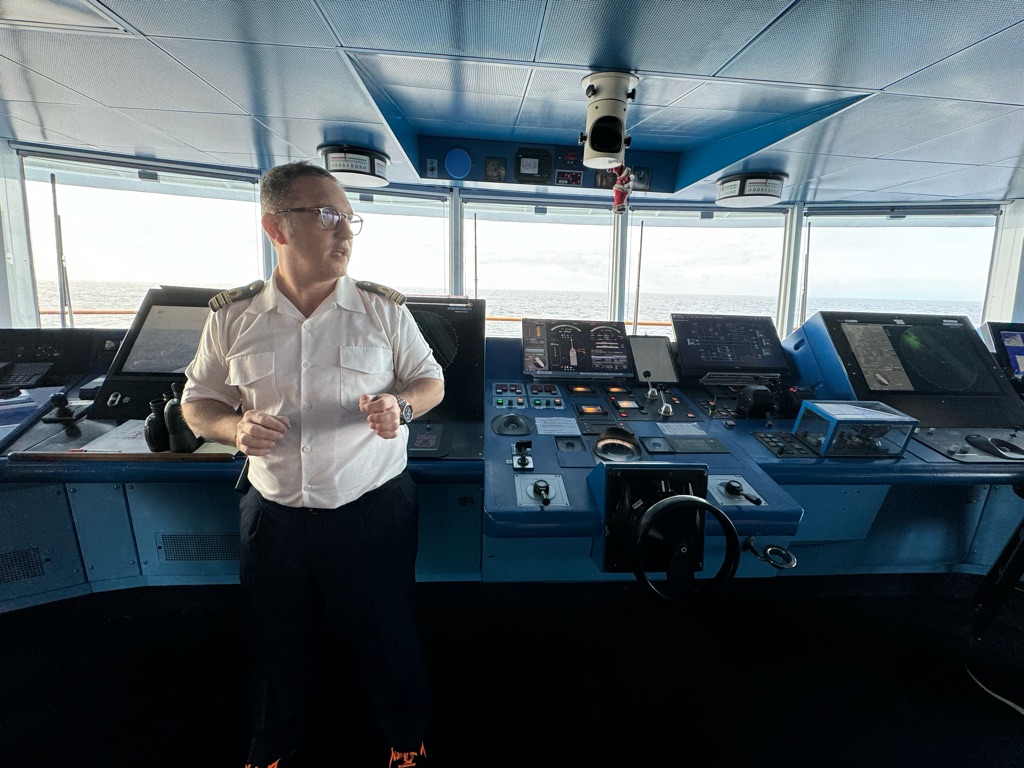
2nd in Command

Control Panel

Our Room
Then we returned from the bridge tour to find our room made up with Happy Anniversary balloons. It isn’t our anniversary, but we enjoyed the mimosas, and the cake!
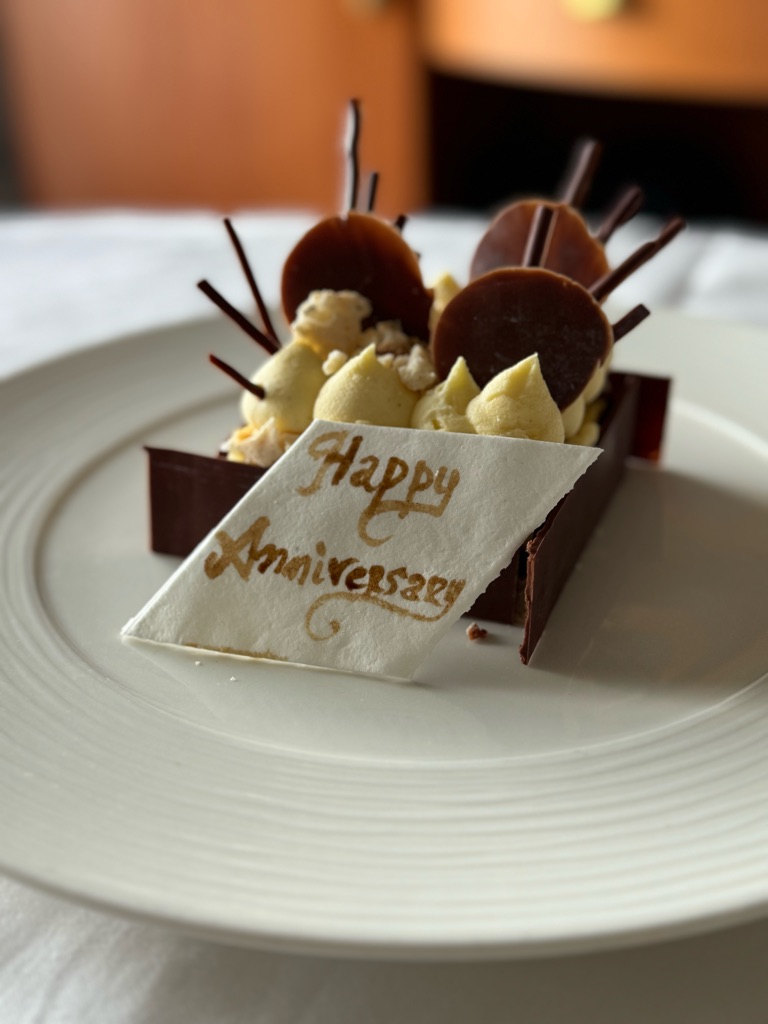
Anniversary Cake
We technically everyday is someone’s anniversary, right?

Enjoying our anniversary surprise!
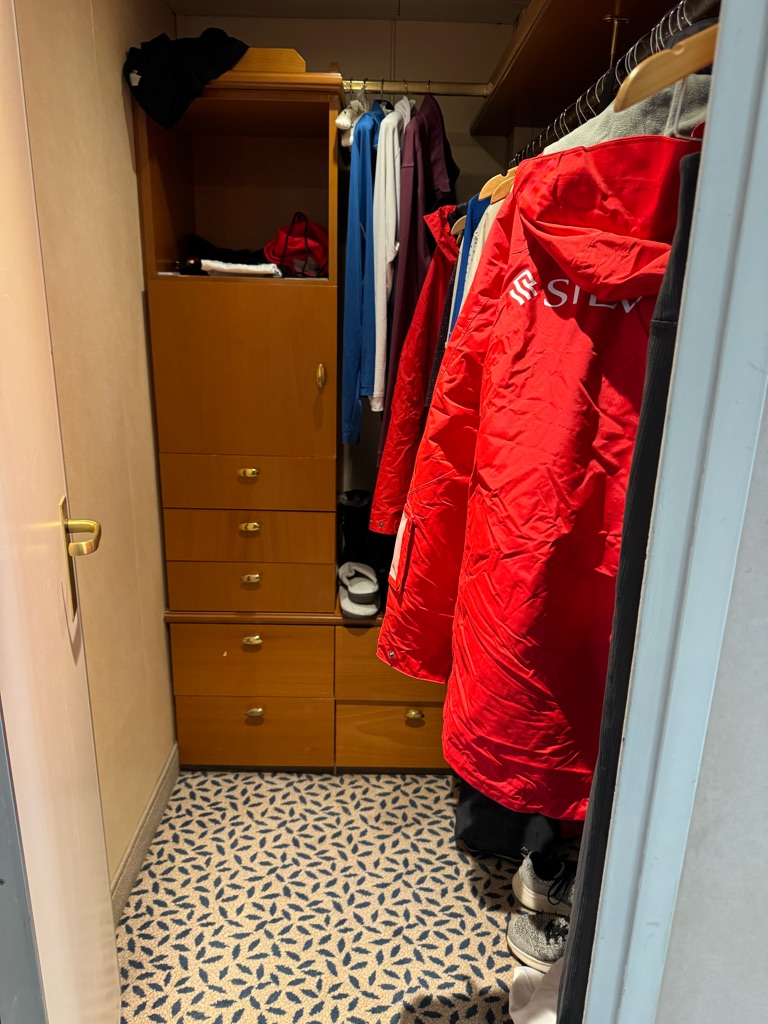
The walk in closet

The bathroom.
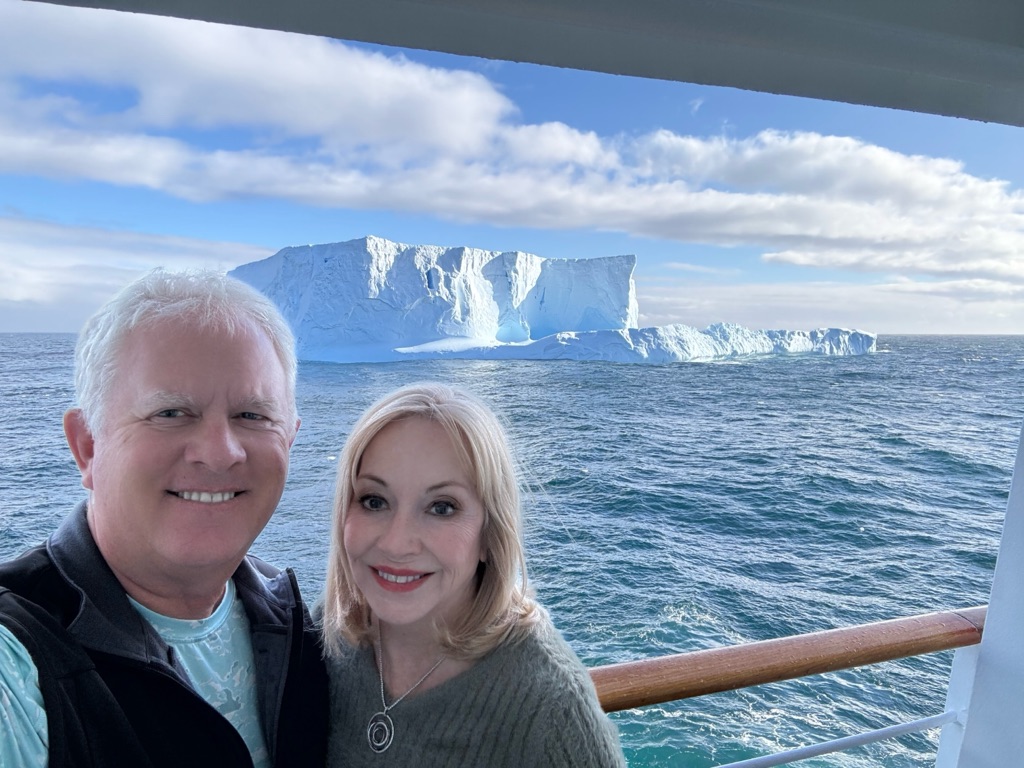
Our View from our Cabin
We’ve arrived in Atarctica! \240We got all geared up in our polar equipment and waddled down to the zodiacs for a tour of the icebergs and \240glaciers in this lille bay. \240
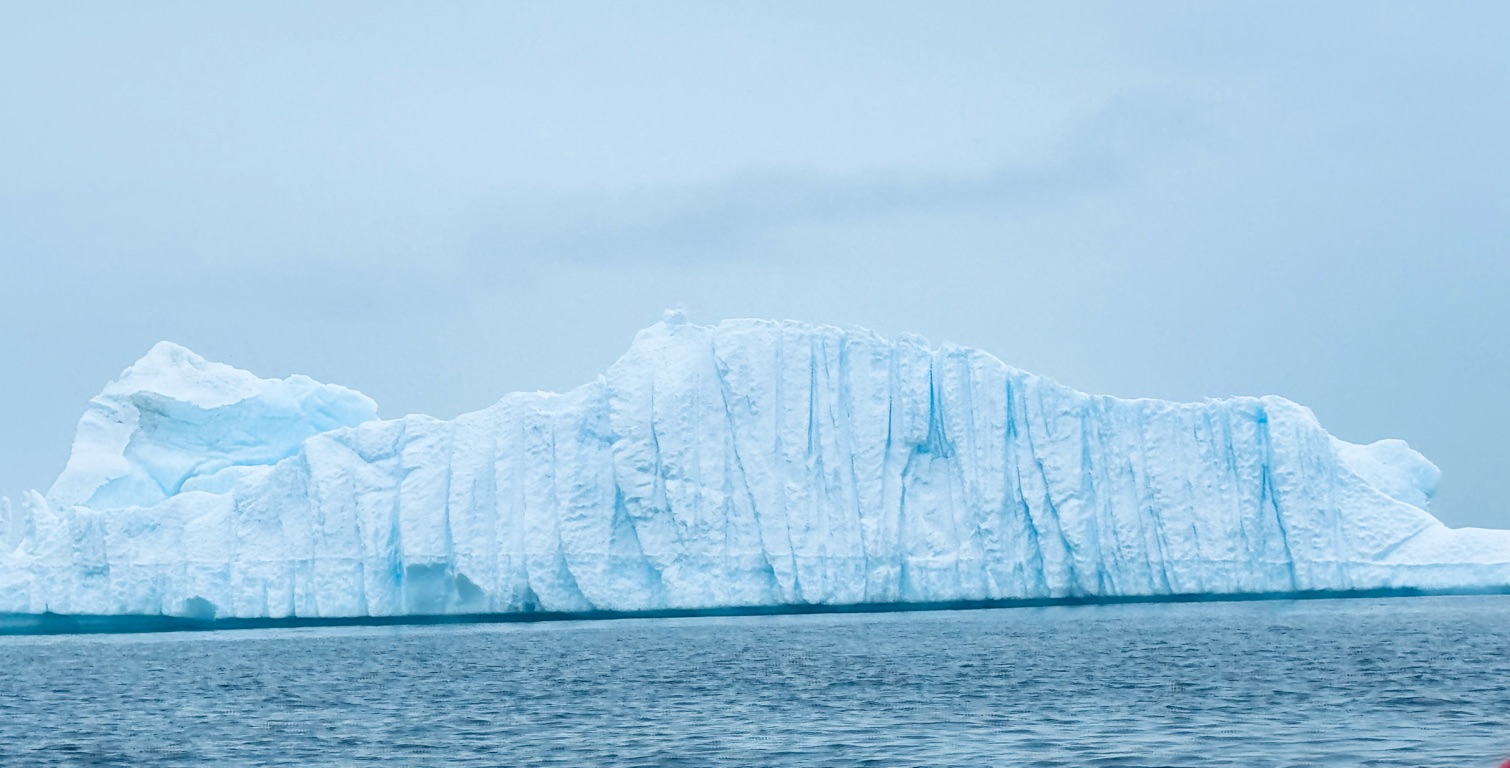
Blue Ice
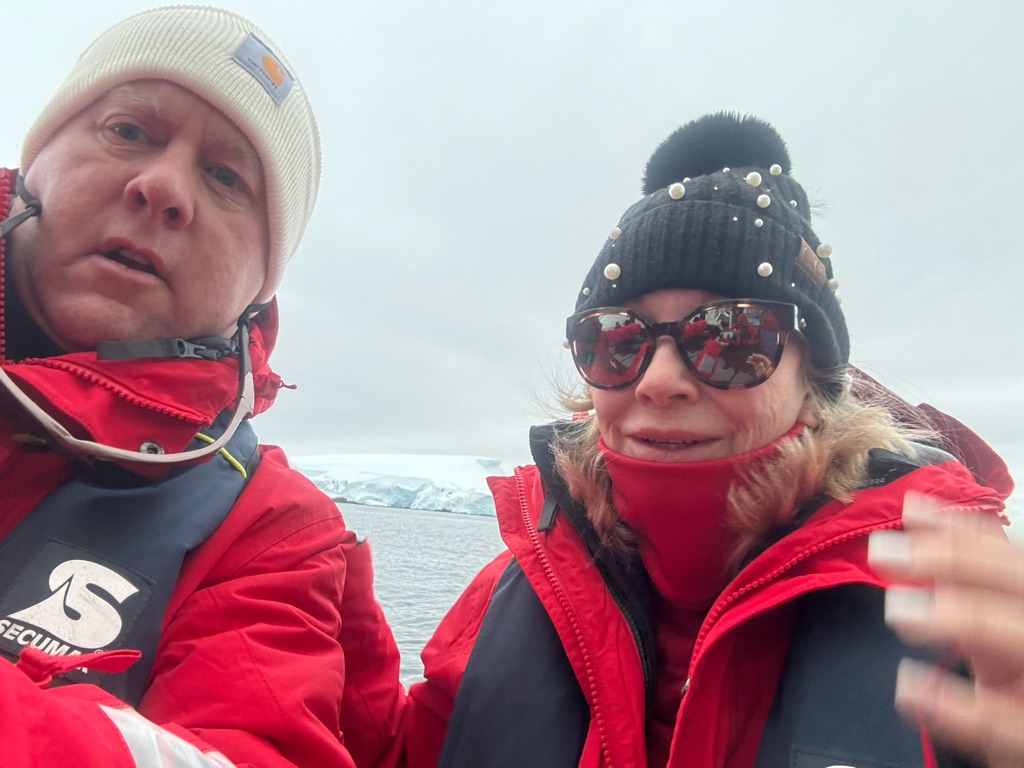
All Bundled Up
We walked and waddled to climb in our zodiac!

Silverwinds from Afar
In just a few moments we were well away from our of ship.
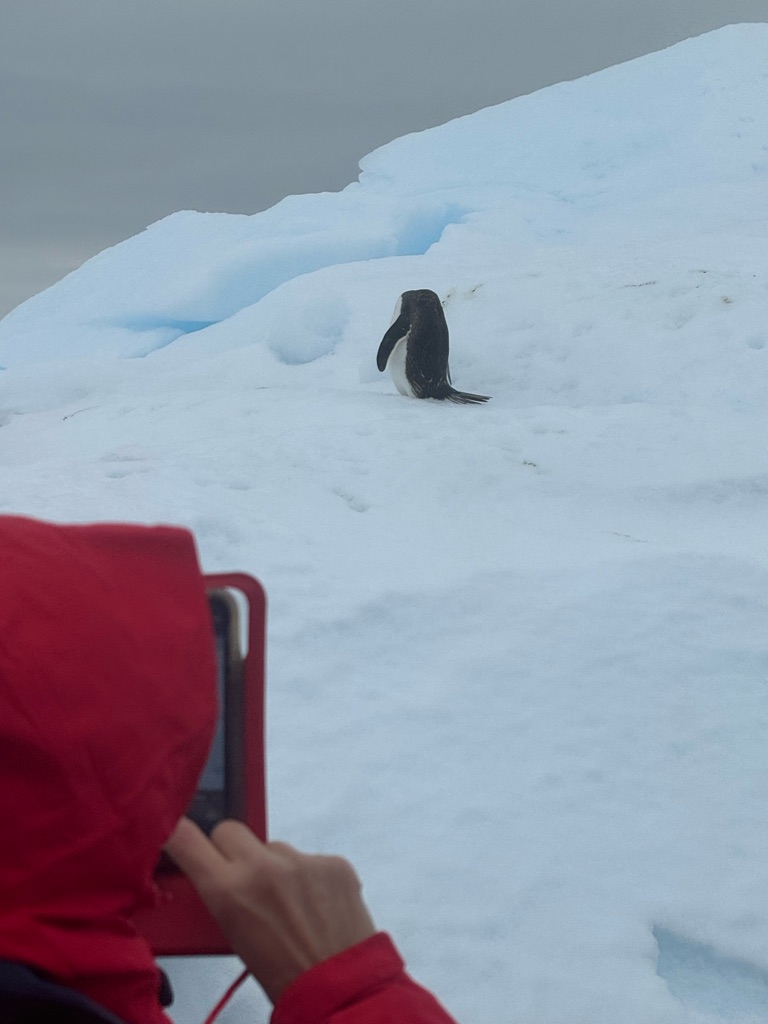
Chinstrap Penquin
The first penquin we saw was this little guy. \240 All alone on an iceberg, this little penguin was preening himself, fluffing and \240oiling his feathers. Our guide said that he was a chinstap penguin, but we didn’t get close enough to see the black stream on his chin, so we took his word. We should see a whole bunch of them later.
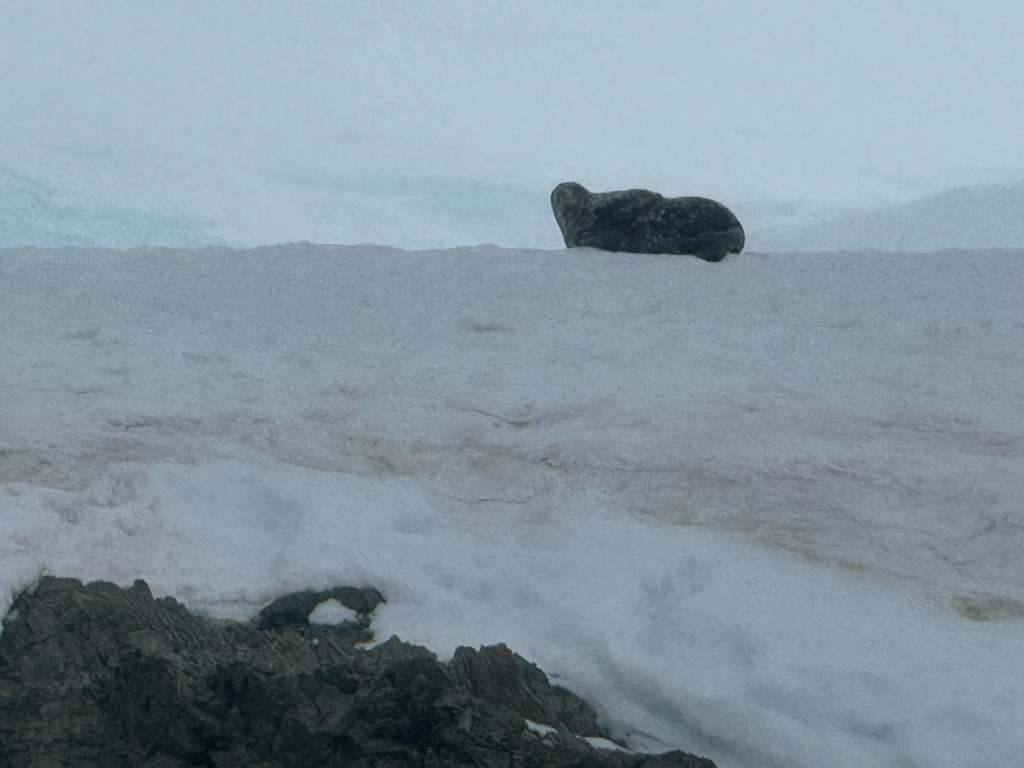
Weddle Seal
The first seal we encounteted is the \240 \240Weddell seals. They measure about 8ft 2 in – 11 ft 6 in long and weigh 880–1,320 lb). They are amongst the largest seals, with a rather bulky body and short fore flippers relative to their body length. Males weigh less than females, usually about 1,100 lb) or less. Male and female Weddell seals are generally about the same length, though females can be slightly larger.Weddell seal face has been compared to that of a cat due to a short mouth line and similarities in the structure of the nose and whiskers The Weddell seal grows a thin fur coat around its whole body except for small areas around the flippers. The colour and pattern of the coat vary, often fading to a duller colour as the seal ages This coat moults around the beginning of summer Adults show a counter-shaded colouration that varies from bluish-black to dark grey dorsally and to light grey/silver ventrally. Coats may change to shades of brown before the annual moult. Adult males usually bear scars, most of them around the head. \240 Unfortunately, we didn’t get close enough to this one to make our many of the features. But we learned all about Antarctic seals during one of our on board lectures.

Fur Seal (aka Sea Lion)
Fur seals (often called Sea Lions) differ \240from true seals by having external ear structures and \240by their ability to sit up on their front flippers giving them a regal appearance. They are much more closely related to sea lions than true seals, and share with them external ears (pinnae), relatively long and muscular foreflippers, and the ability to walk on all fours. They are marked by their dense underfur, which made them a long-time object of commercial hunting.There are other, somewhat subtle, differences between the front flippers of the two groups, but the hind flipper differences are noticeable. In seals, the hind flippers extend directly behind the body, and are not capable of rotation unlike the hind flippers of sea lions that are longer and may be rotated toward the front of the body. This causes differences between the two in locomotion when on land: seals move forward by caterpillar-like hitching movements; sea lions use their hind legs to walk or even gallop across land. Fur seals, actually in the sea lion group, having extremely long hind flippers.

Wave Patterns in the Ice
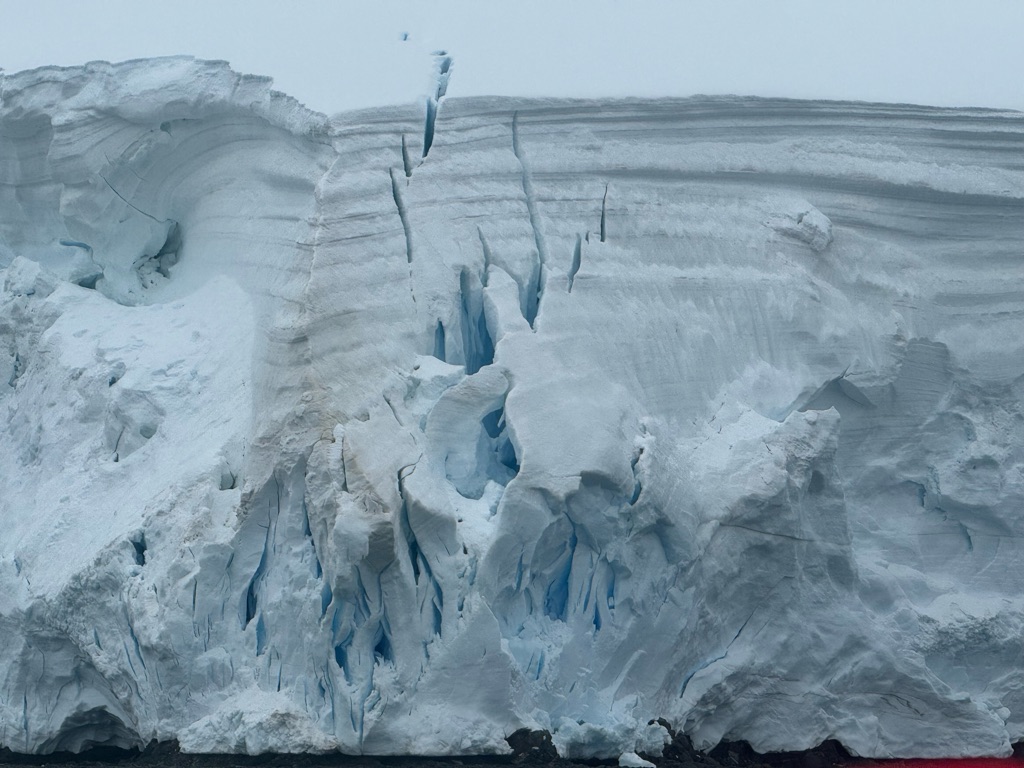
Fissures in the Ice
Ice turns white when it is exposed to w windy and \240elements. But deep in the fores fissures, the ice is blue!
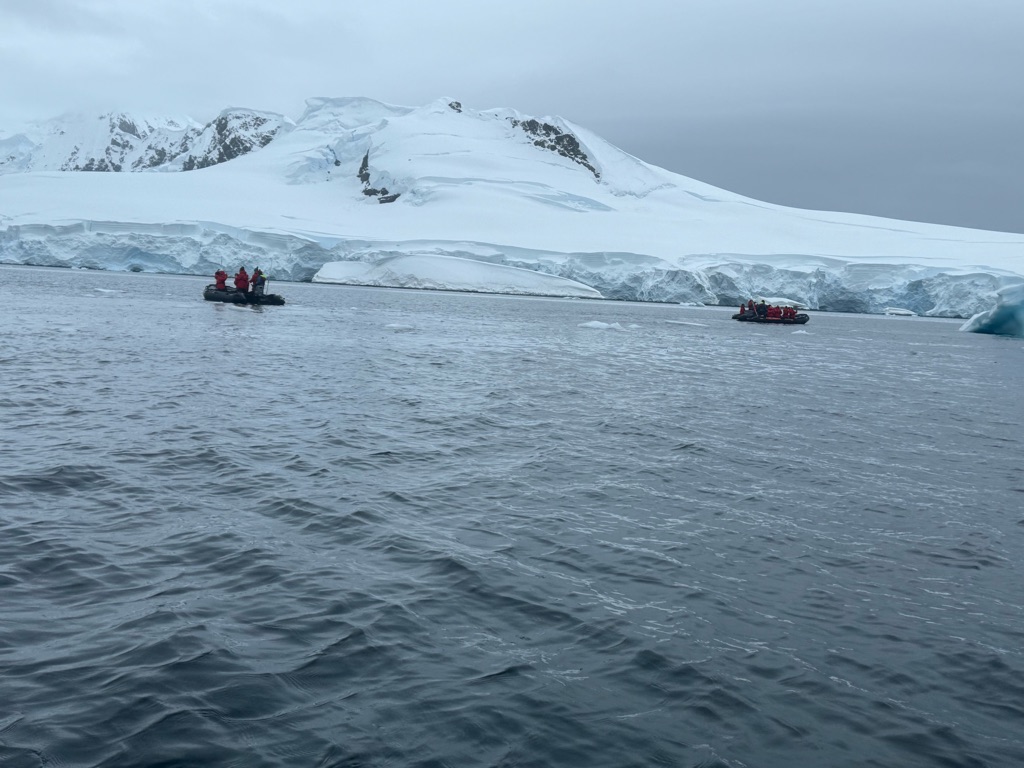
Zodiacs and Ice